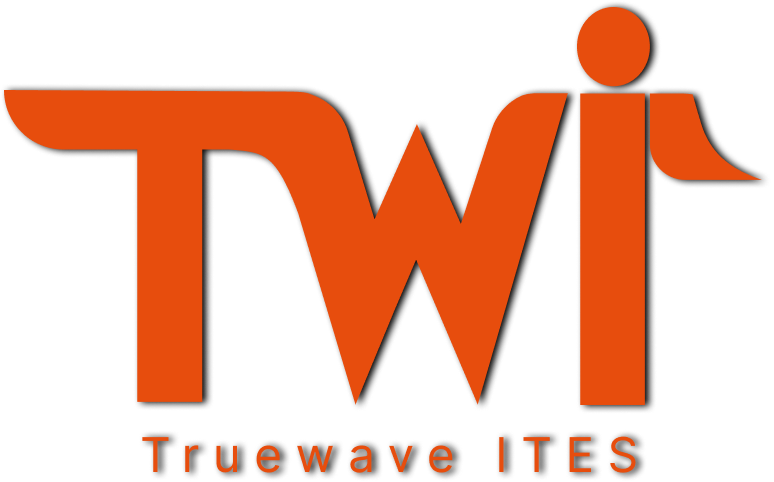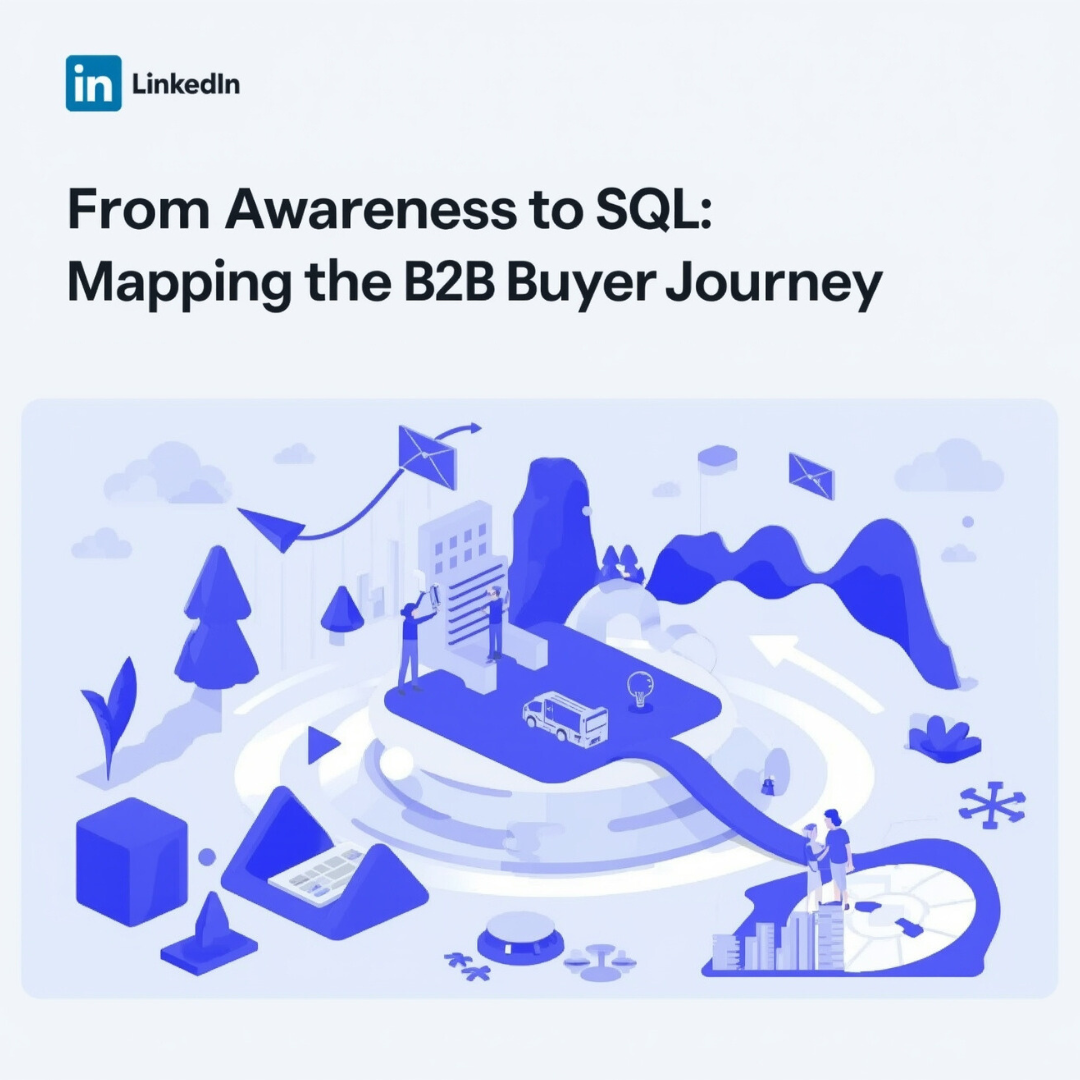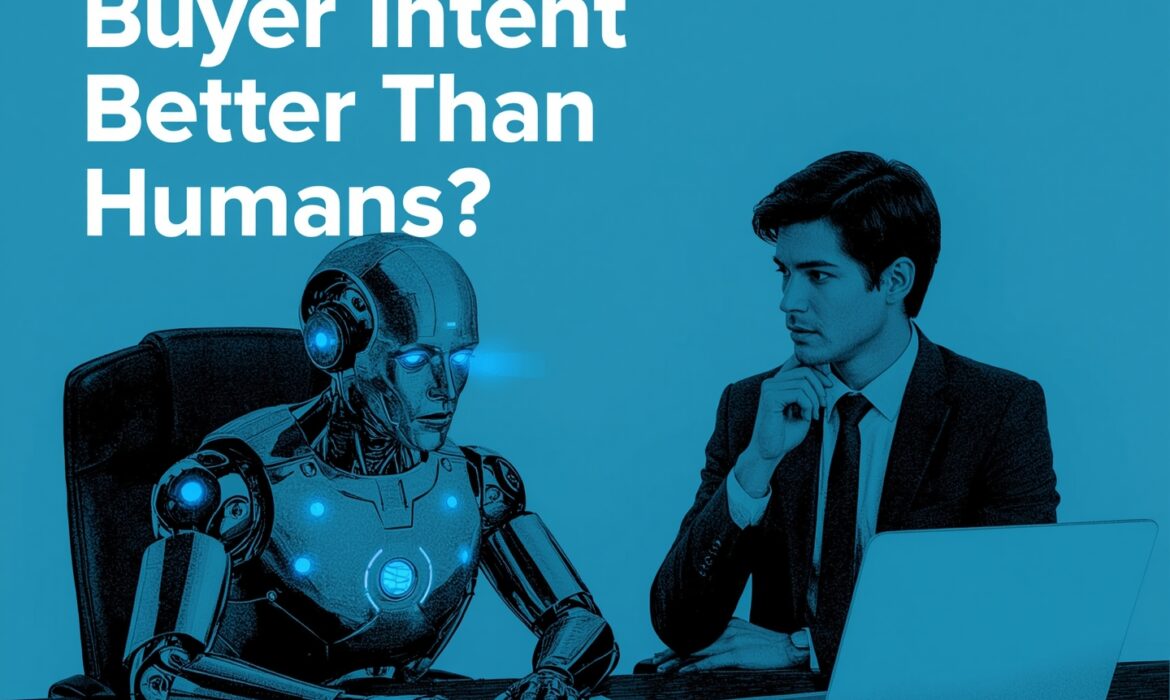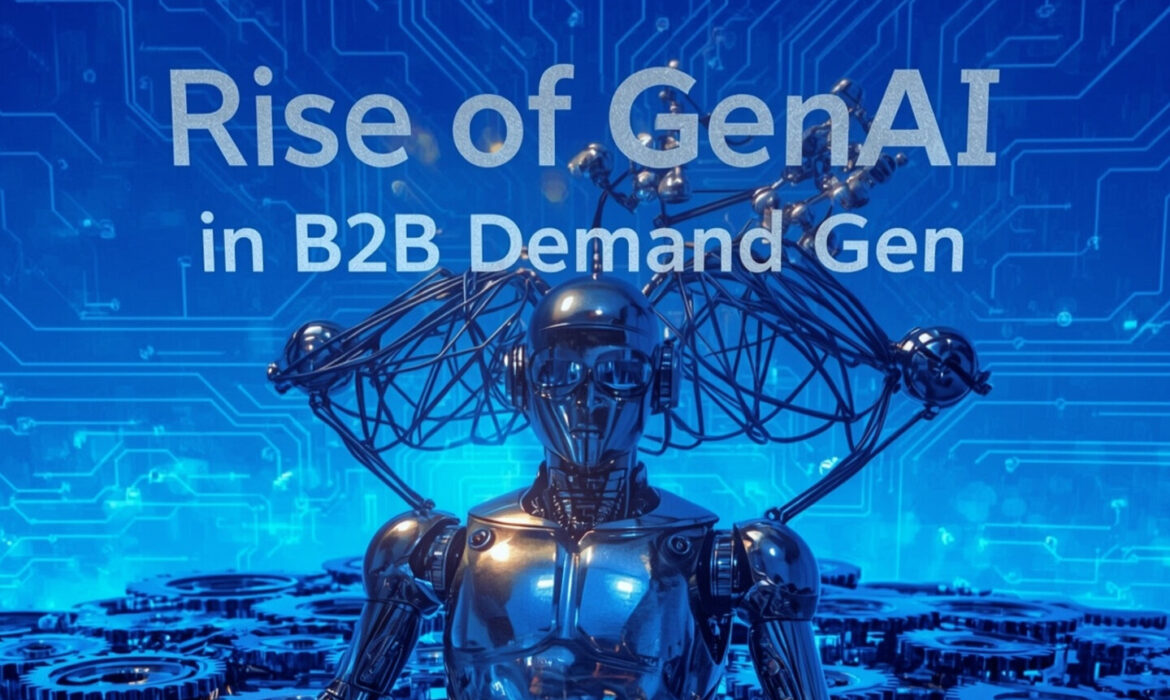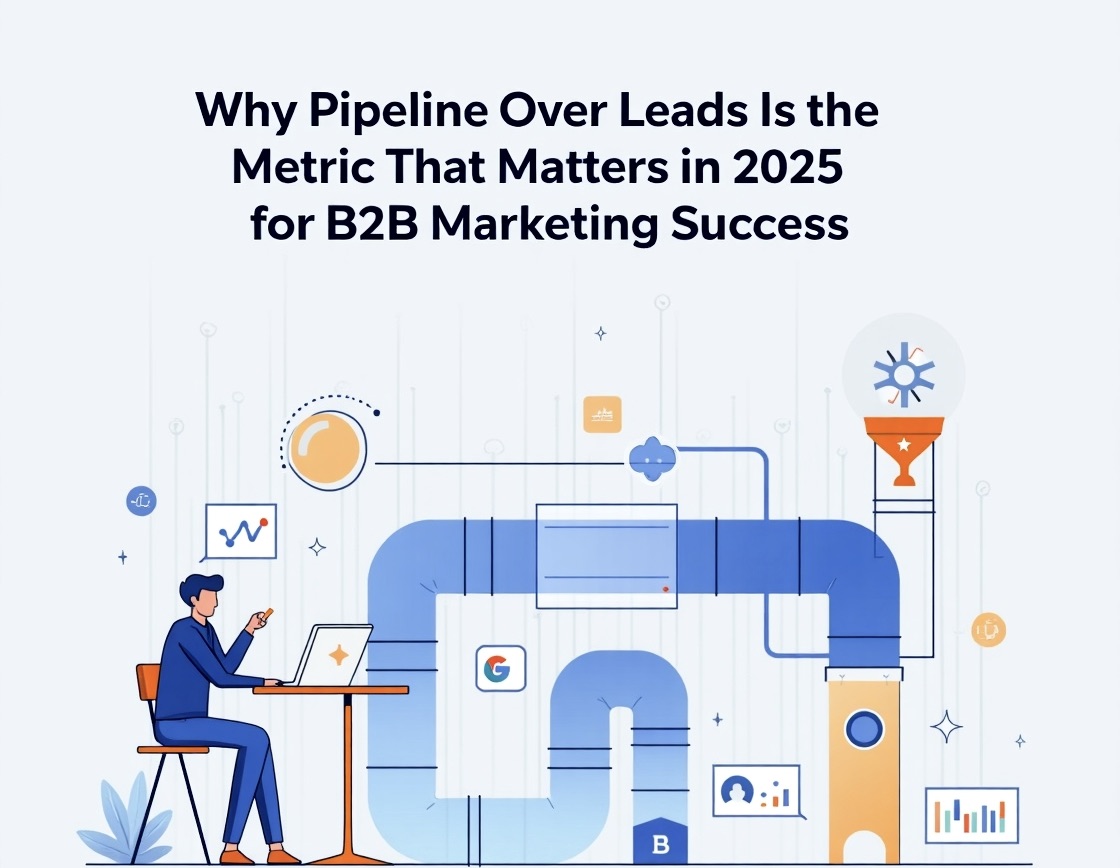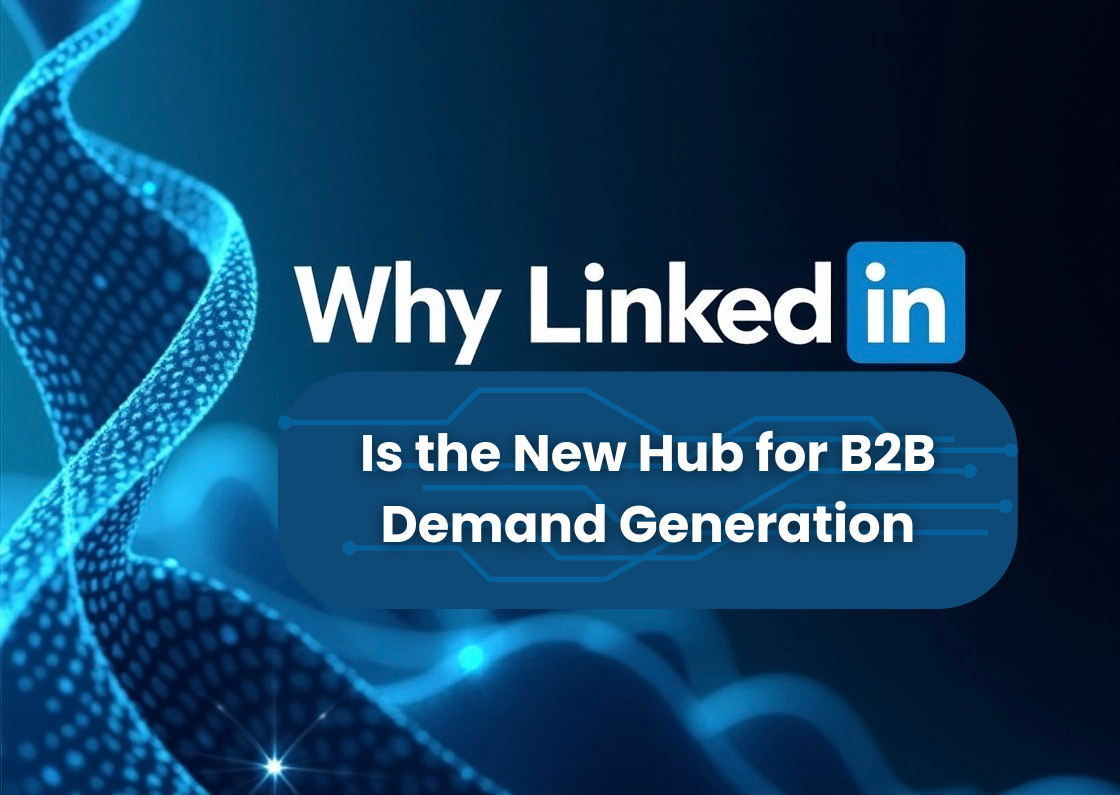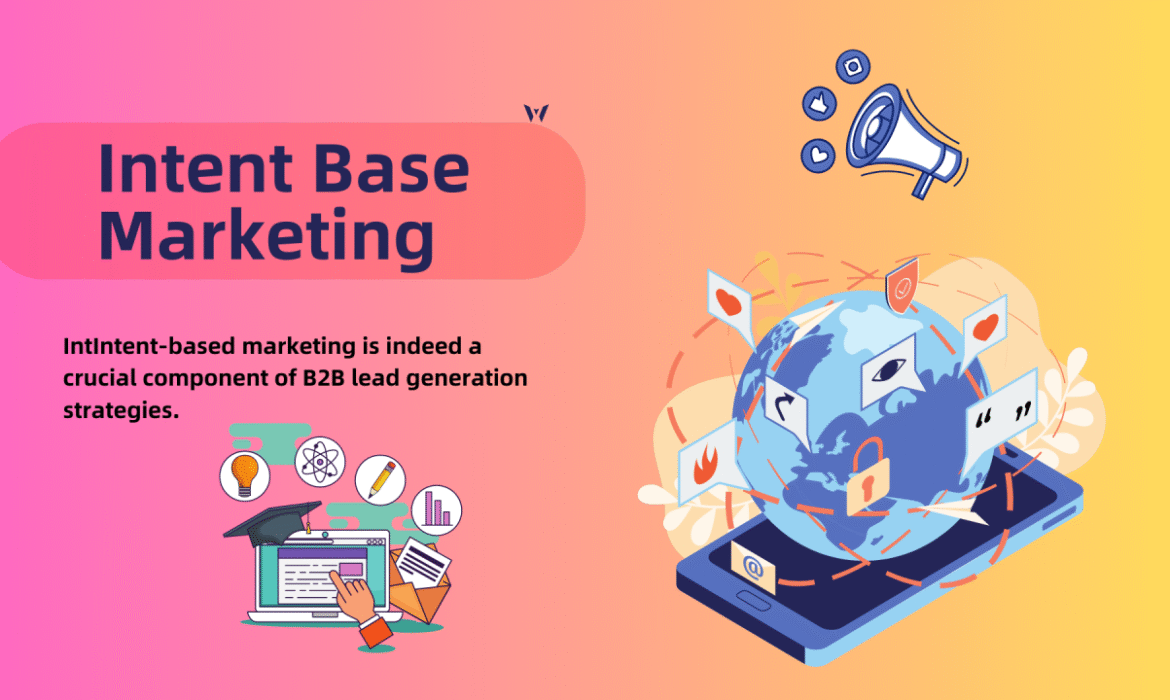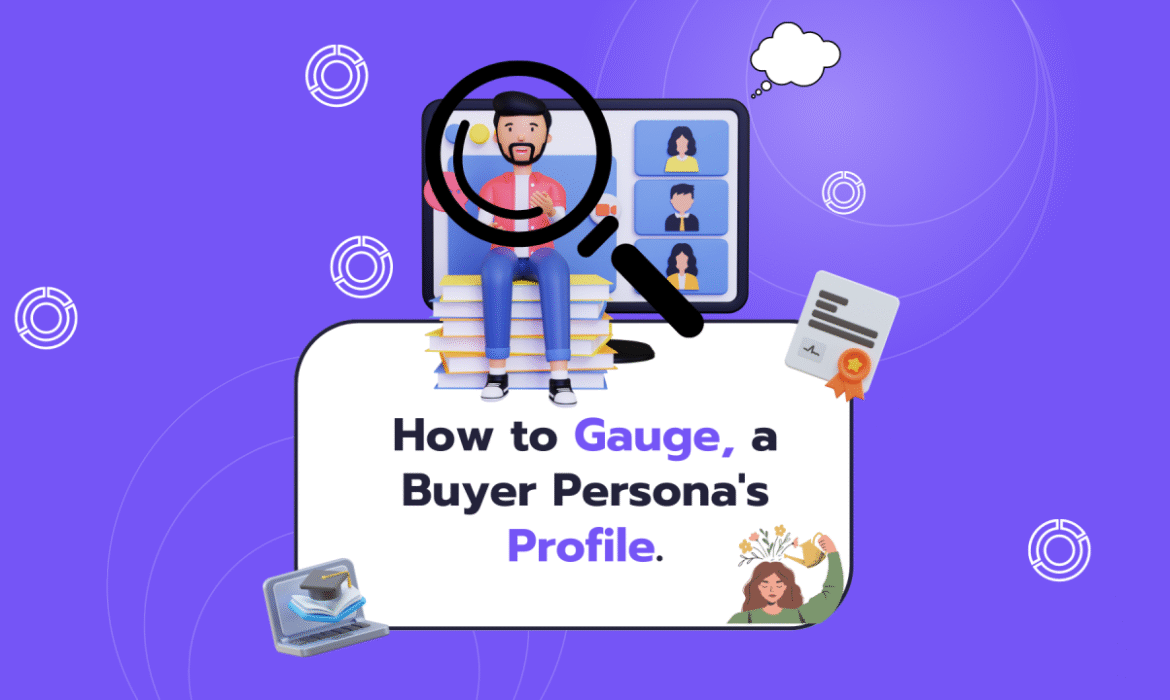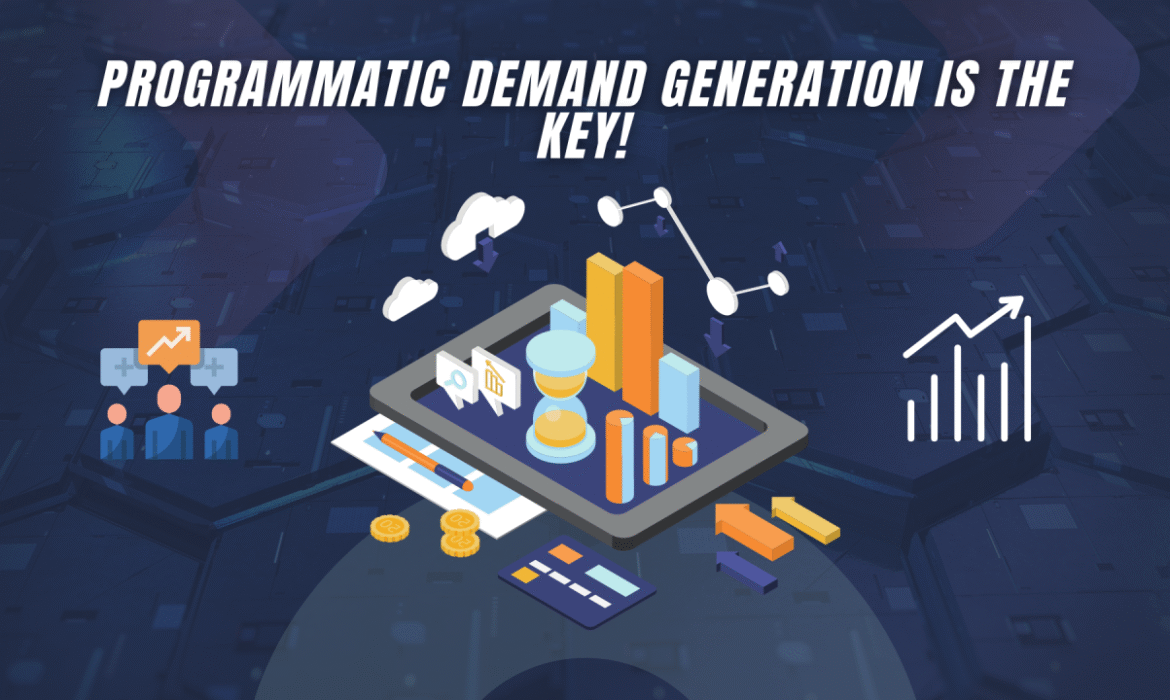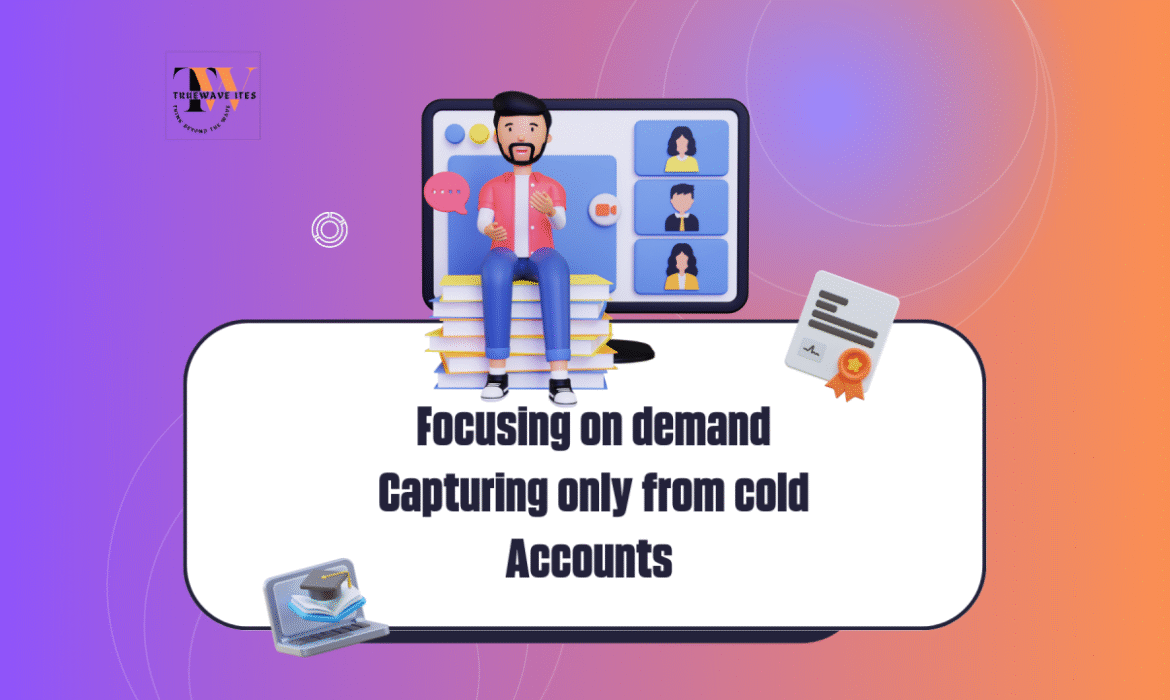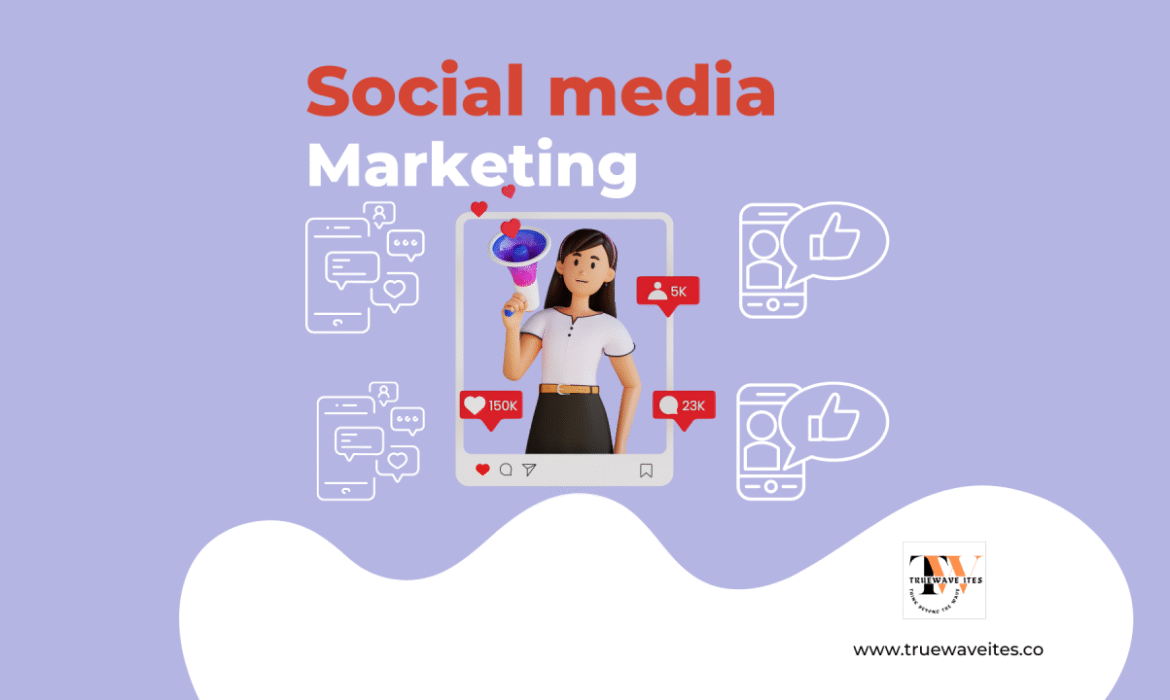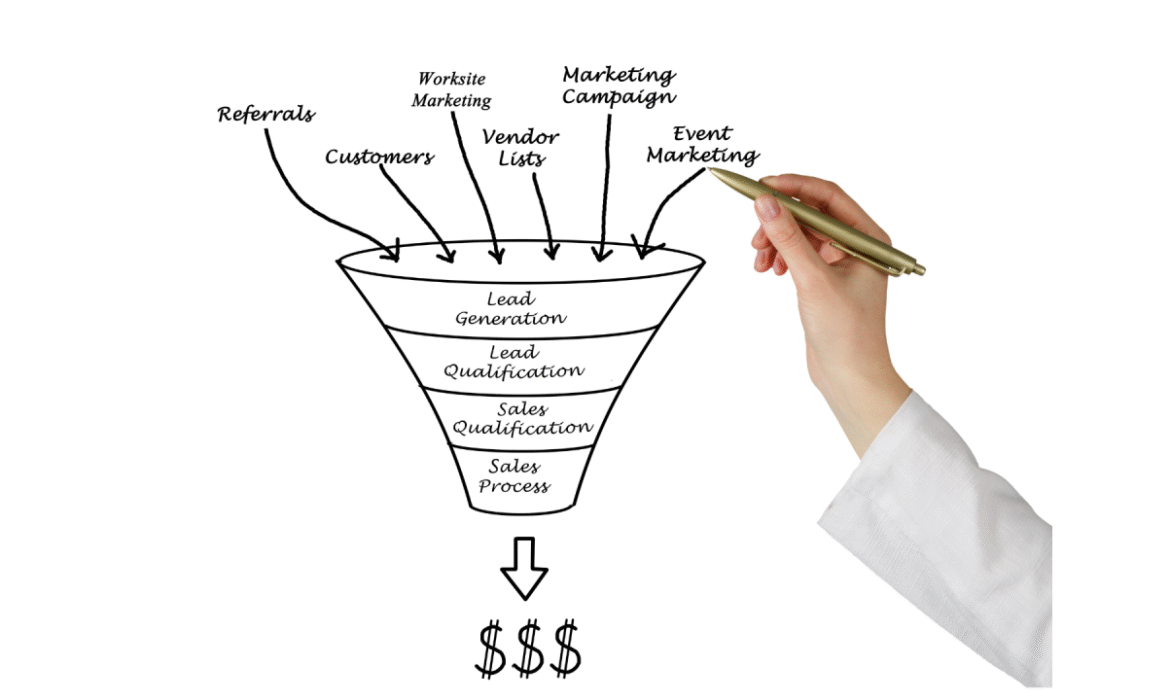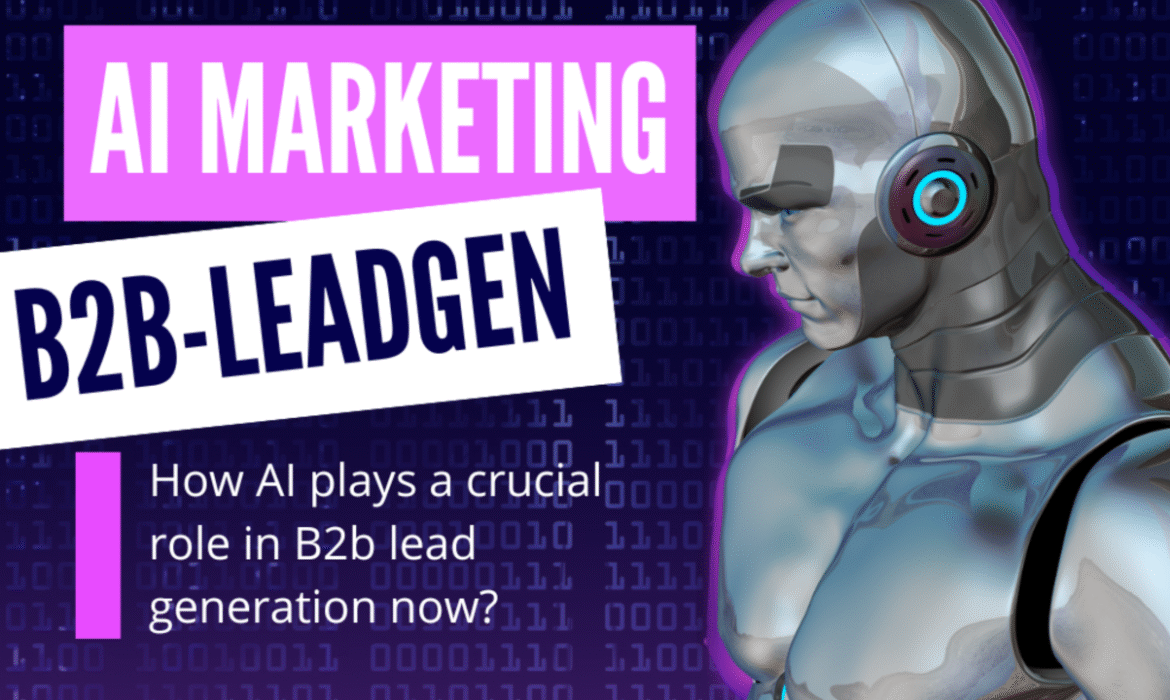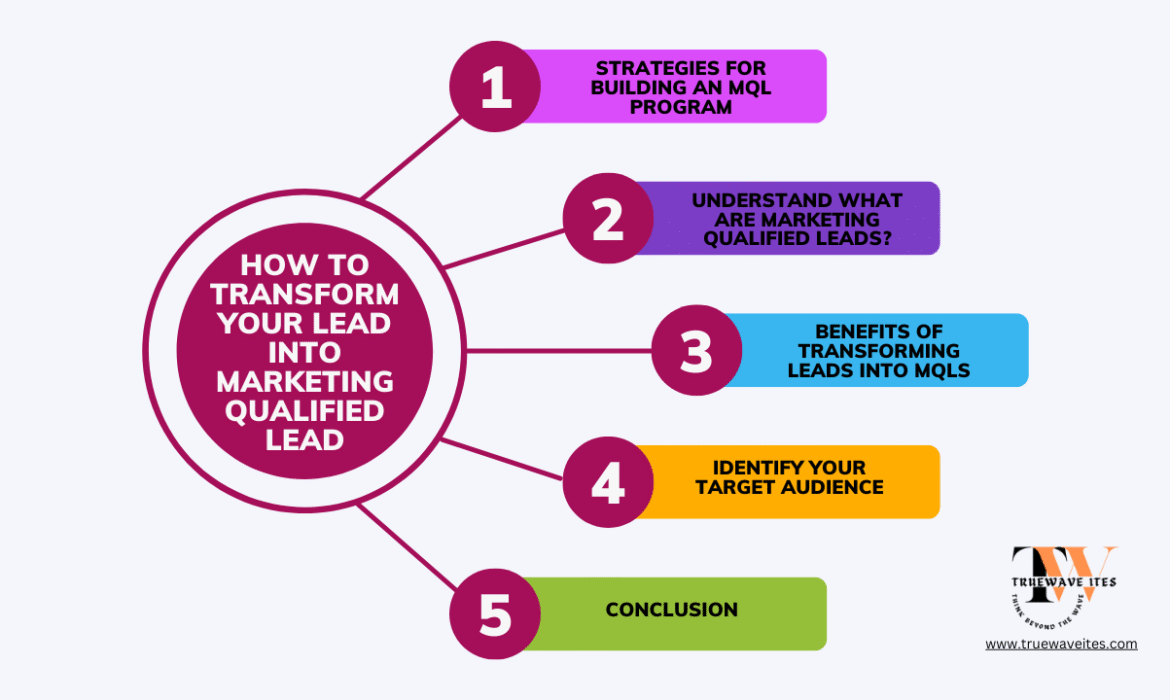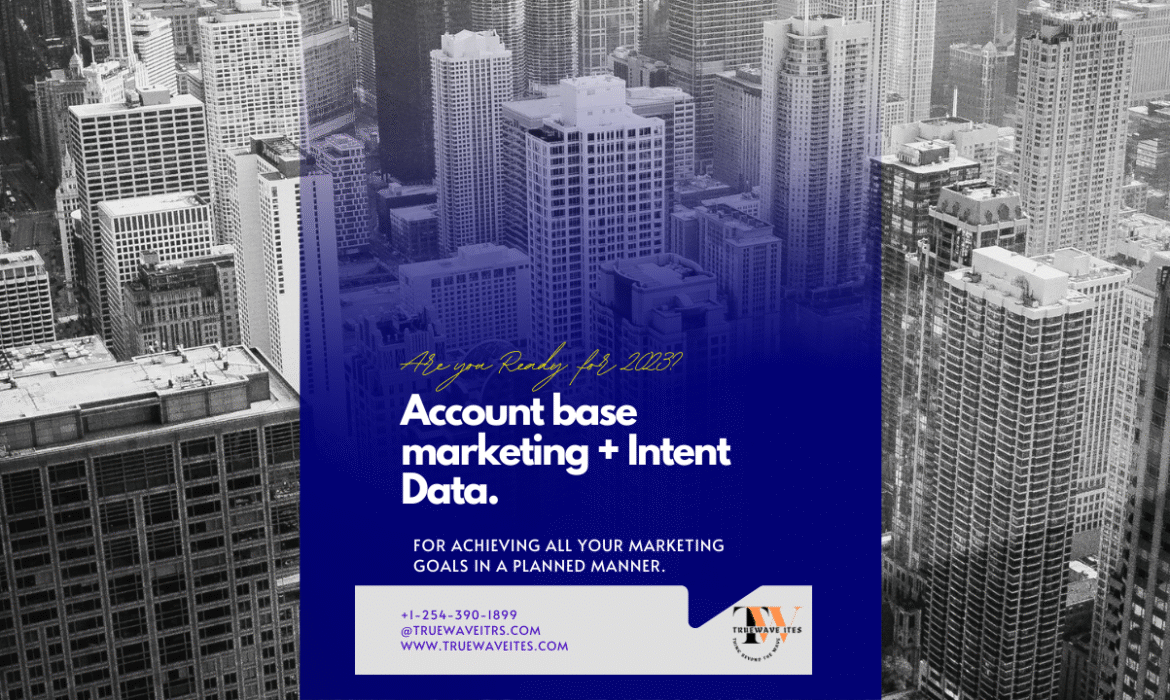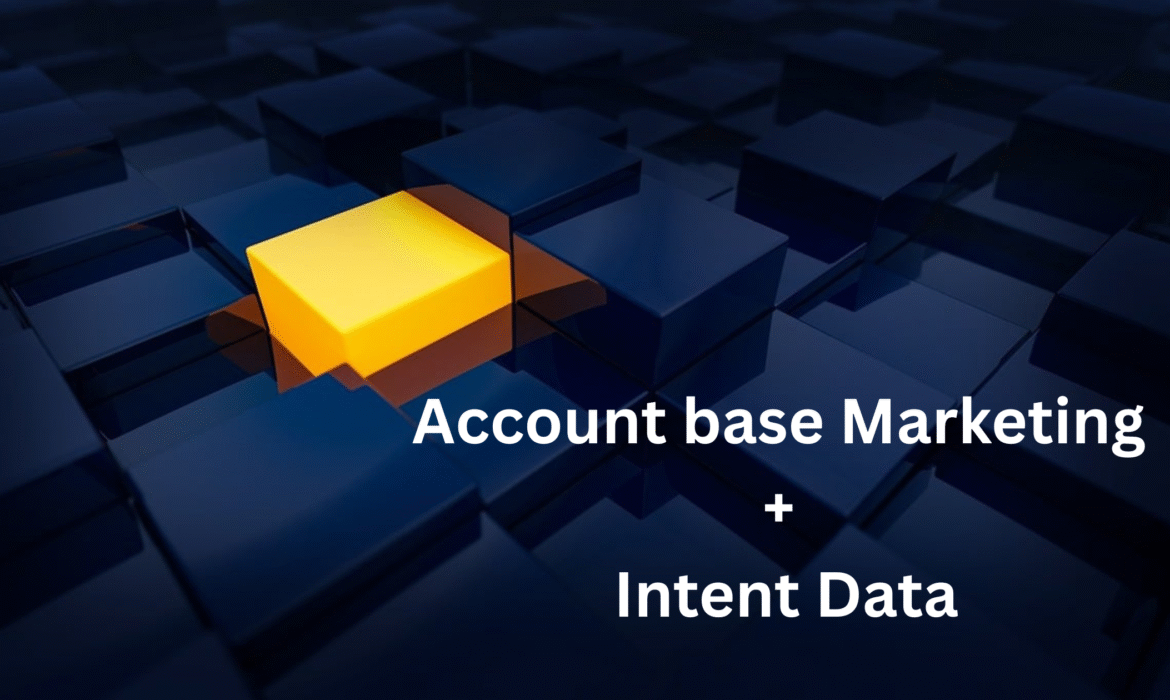Mapping the B2B Buyer Journey: From Awareness to SQL
From Awareness to SQL: Mapping the B2B Buyer Journey to Maximize Lead Conversion
Every B2B marketer wants the same thing: a pipeline filled with sales-qualified leads (SQLs) who are genuinely interested in what you offer. But generating those leads takes more than just pushing out content or launching ad campaigns. It requires a clear, strategic understanding of Mapping the B2B Buyer Journey—from the moment they discover your brand to when they’re ready to talk to sales.
The challenge? Many companies approach demand generation as a one-size-fits-all process. They create content without considering where the Mapping the B2B Buyer Journey or what kind of information they need to move forward. As a result, promising leads drop off before they’re ready to convert.
In this article, we’ll walk through how to map the B2B buyer journey from awareness to SQL. You’ll learn how to align your messaging, content, and outreach strategies to each stage—so that instead of losing leads, you’re nurturing them with purpose and precision.
Why Mapping the Buyer Journey Matters More Than Ever
Today’s B2B buyers are more empowered than ever. They conduct extensive research, compare solutions, and engage with multiple touchpoints—often before speaking to a sales rep.
Here’s what the typical journey might look like:
- Awareness: “I have a problem. What are my options?”
- Consideration: “How do different solutions compare?”
- Decision: “Is this the right vendor for me?”
If your content and outreach don’t match the mindset of the buyer at each stage, they won’t engage. Worse, they might go with a competitor who provides more timely and relevant value.
Mapping the journey allows you to:
- Understand buyer intent and behavior at every touchpoint
- Personalize content and outreach for higher engagement
- Move leads forward—intentionally and efficiently
Stage 1: Awareness — Capturing Attention with the Right Hooks
At this stage, your prospects may not even know they need your solution yet. They’re focused on identifying and understanding their problem.
Your goal: Spark curiosity, educate, and establish your brand as a trustworthy resource.
Effective content formats:
- Educational blog posts (e.g., “Why Your Sales Team Is Missing Quotas—And What To Do About It”)
- Explainer videos or infographics
- Industry trend reports
- SEO-optimized content for top-of-funnel keywords
Tips for success:
- Avoid product-heavy messaging.
- Focus on pain points and challenges.
- Use clear, benefit-driven headlines to attract organic traffic.
Example: A B2B HR tech company published a guide titled “The Real Cost of High Employee Turnover,” which attracted thousands of top-funnel visitors without mentioning the product once.
Stage 2: Consideration — Guiding Buyers Toward Solutions
By now, the prospect is aware of the problem and is actively researching ways to solve it. They’re comparing vendors, reading reviews, and evaluating features.
Your goal: Provide clarity, build credibility, and show how your solution stands out—without hard-selling.
Effective content formats:
- Comparison guides
- Case studies
- Webinars and live Q&A sessions
- Buyer’s checklists
Tips for success:
- Use email nurturing to share mid-funnel resources.
- Incorporate customer testimonials or industry use cases.
- Align messaging with industry-specific needs.
Example: A cybersecurity platform used intent data to retarget visitors who downloaded their comparison guide with an invitation to a niche-focused webinar. Attendance and conversion rates nearly doubled.
Stage 3: Decision — Moving Prospects from MQL to SQL
This is the moment of truth. The buyer is shortlisting options and is almost ready to speak to a sales rep—if they haven’t already.
Your goal: Minimize friction, showcase results, and make it easy for them to say “yes” to the next step.
Effective content formats:
- Personalized demo invitations
- ROI calculators
- Product one-pagers and pricing FAQs
- Email sequences with clear CTAs
Tips for success:
- Route leads to sales quickly based on engagement signals.
- Personalize the messaging—reference industry, role, or prior interactions.
- Ensure your sales and marketing teams are aligned on what qualifies as an SQL.
Example: A SaaS company used AI lead scoring combined with website behavior data to prioritize high-intent leads. These were automatically flagged as SQLs and handed to sales with a personalized briefing. This alignment boosted conversion-to-opportunity rates by 38%.
How to Bridge Gaps in Your Buyer Journey
Even with a mapped journey, gaps often exist—causing leads to stall or disappear. Here’s how to fix them:
- Audit your content library: Do you have relevant assets for each stage? Are there any content deserts?
- Use lead scoring intelligently: Align scoring with actual buying behavior—not arbitrary rules.
- Integrate sales and marketing tools: Platforms like HubSpot, Pardot, or Marketo can help create smoother transitions from MQL to SQL.
- Review funnel performance regularly: Where do leads typically drop off? What touchpoints convert best?
The Role of Intent Data in Mapping the B2B Buyer Journey
Buyer behavior alone isn’t enough. Intent data can add depth to your journey map by signaling which accounts are in-market and what topics they’re researching.
- Third-party data from platforms like Bombora reveals what your buyers are researching outside your site.
- First-party data shows how they’re engaging with your emails, pages, and offers.
Use this data to:
- Time outreach more effectively
- Personalize content suggestions
- Qualify leads with greater precision
Tip: When intent data is layered with behavioral scoring, your SQLs become not just warm—but sales-ready.
Conclusion: From Awareness to SQL, Strategy Beats Guesswork
Mapping the B2B buyer journey isn’t just a marketing exercise—it’s a revenue strategy. By aligning your content and outreach to each stage of the journey, you reduce drop-offs, increase trust, and turn more leads into sales-qualified opportunities.
Remember:
- Awareness requires education, not selling.
- Consideration needs comparison, not persuasion.
- Decision demands confidence, not pressure.
Want to optimize your buyer journey from top to bottom? Start by identifying your biggest gaps—and let intent and behavior guide your next move.
Can AI Understand Buyer Intent Better Than Humans?
Can AI Understand Buyer Intent Better Than Humans? Decoding the Future of B2B Sales Signals
B2B sales and marketing have always hinged on one critical factor: timing. Reach out too early, and you risk annoying a lead. Wait too long, and they’ve already gone with a competitor. But what if artificial intelligence could detect buyer intent faster, better, and with more accuracy than a human ever could?
Today, AI-powered systems are revolutionizing how businesses read and respond to digital buying signals. From analyzing browsing behavior to interpreting engagement patterns across channels, AI is uncovering intent cues at scale. Yet, many B2B teams still rely heavily on intuition, anecdotal evidence, or static lead scoring—leading to missed opportunities and poorly timed outreach.
In this article, we’ll explore whether AI can truly understand buyer intent better than humans. We’ll highlight where AI excels, where it still falls short, and how B2B teams can blend machine intelligence with human insight to drive smarter, more effective engagement strategies.
Understanding Buyer Intent: Why It’s Harder Than It Looks
Buyer intent isn’t just about clicking a CTA or opening an email. It’s a combination of behaviors and signals—some overt, many subtle—that indicate a prospect’s interest, readiness, or urgency.
Traditionally, sales teams relied on:
- Gut feelings based on conversations
- CRM activity logs and email opens
- One-size-fits-all lead scoring models
The challenge? These signals are often incomplete, outdated, or misinterpreted.
For example:
- A lead downloading a whitepaper might be researching—not ready to buy.
- A prospect opening multiple emails could be curious, but not in-market.
Without context, these signals can lead to misaligned follow-ups and lost trust.
How AI is Transforming the Way We Decode Intent
Artificial intelligence doesn’t just look at individual behaviors—it detects patterns across massive datasets in real time. This makes it incredibly effective for interpreting intent signals that humans might miss or misjudge.
Here’s where AI stands out:
Analyzing Behavioral Patterns at Scale
AI doesn’t rely on isolated touchpoints. Instead, it:
- Tracks how a user navigates your site
- Measures scroll depth, time spent, click sequences
- Compares behavior across similar buyer journeys
This pattern recognition helps determine not just what a lead is doing—but why they might be doing it.
Integrating Multichannel Signals
Today’s buyers engage across multiple touchpoints: emails, webinars, paid ads, LinkedIn, G2 reviews, and more. AI aggregates these signals to create a more complete buyer profile.
For instance, a platform like 6sense can combine ad engagement + website visits + company-level firmographics to predict buying stage.
Predictive Scoring Over Static Rules
Traditional lead scoring is rule-based: assign X points for opening an email, Y points for filling out a form. But buyer behavior is fluid.
AI uses predictive models that learn and adapt, weighting actions differently based on outcomes—leading to more accurate prioritization.
Can AI Replace Human Intuition? Not Quite.
While AI is powerful, it’s not perfect. Human judgment still plays a vital role—especially in interpreting emotion, nuance, and one-on-one conversations.
Here’s what humans still do better:
- Understand tone in live discussions or emails
- Pick up on non-verbal cues during video calls
- Interpret cultural or industry-specific context
- Build rapport and respond empathetically
In fact, relying purely on AI can backfire. Consider a scenario where AI flags a lead as high intent based on page views—but a quick conversation reveals they were just browsing for competitive research.
How to Combine AI and Human Insight for Better Results
The smartest B2B teams don’t pick sides. They build workflows that integrate AI-driven intelligence with human judgment.
Here’s how:
1. Use AI to Surface Warm Leads
Let AI handle the heavy lifting:
- Monitor real-time engagement
- Score leads dynamically
- Highlight accounts showing surging interest
This helps reps focus on the right people, at the right time.
2. Train Sales Teams on AI Context
Instead of blindly trusting a score, train your team to understand why AI prioritized a lead. Look at:
- Behavioral patterns
- Channel activity
- Recent touchpoints
This context improves the quality of outreach and fosters trust with prospects.
3. Layer in Intent Data Platforms
Tools like Bombora and Demandbase aggregate third-party intent signals—like what a buyer is researching across the web. Combine these with your first-party data for a 360° view of buyer readiness.
Pro Tip: Use intent data to time outreach, personalize messaging, and align content offers to what buyers are actively researching.
4. Create Feedback Loops
Let humans fine-tune the AI. Gather rep feedback on lead quality, win/loss analysis, and email replies to continually train and improve AI models.
Real-World Example: AI in Action
A mid-size cybersecurity company integrated AI into their demand gen tech stack. By combining website behavior, email engagement, and third-party intent data, their AI model identified previously overlooked accounts showing high buying signals.
Instead of relying solely on form fills, the sales team began reaching out to accounts marked “high intent” by the AI.
Results in 60 days:
- 40% increase in demo bookings
- 22% higher lead-to-opportunity conversion
- Shortened sales cycle by 15%
The key? They didn’t abandon human input—they enhanced it.
Potential Pitfalls to Watch For
As with any technology, AI can cause problems when misused.
Be aware of:
- False positives: Not all activity means intent
- Over-segmentation: Too much automation can lead to hyper-fragmented campaigns
- Privacy concerns: Always ensure compliance with GDPR and data privacy laws
Balance is essential. Keep the user experience at the core of your strategy.
Conclusion: Can AI Understand Buyer Intent Better Than Humans?
In many ways, yes—AI can detect patterns and signals that humans can’t, especially at scale. But the best outcomes come when AI insights are combined with human empathy, intuition, and real conversation.
For B2B teams, the future isn’t AI or human—it’s AI plus human.
When you blend machine intelligence with personalized outreach and contextual understanding, you create a powerful, intent-driven engagement strategy that actually converts.
Want to learn more about aligning your sales and marketing efforts with AI-powered intent data? Explore our latest resources or get in touch with our strategy team.
AI + Human Touch in Outreach for B2B Success
AI + Human Touch: Striking the Right Balance in Outreach for B2B Success
In today’s rapidly evolving B2B landscape, one question keeps resurfacing: how can businesses scale outreach without losing the personal connection that builds trust? The answer lies in a thoughtful blend of AI + Human Touch with efficiency and empathy.
Artificial intelligence has revolutionized how we engage with leads. From predictive analytics to automated email campaigns, AI helps marketers move fast, scale efforts, and analyze behavior like never before. However, in the race to automate, something critical often gets left behind—genuine human connection.
Too much automation can lead to generic, robotic outreach that fails to resonate. Prospects feel like just another number in the funnel. The result? Lower engagement, reduced trust, and missed opportunities.
This article explores how to strike the right balance between AI and human touch, providing practical strategies for B2B marketers to optimize outreach without losing authenticity. Let’s dive in.
Why AI Alone Isn’t Enough in B2B Outreach and Human Touch is must
AI excels at processing data and predicting behavior. It can automate repetitive tasks like email personalization, follow-ups, and segmentation. But when AI dominates your outreach, it often leads to:
- Messages that feel templated and impersonal
- Inability to adapt to emotional or situational nuances
- Missed chances to connect on a deeper, human level
B2B decision-makers are savvy. They can spot automation instantly. And when they do, it’s hard to build trust.
While AI opens the door, human interaction builds the relationship.
The Value of Human Touch in Building Trust
In complex B2B deals, trust isn’t a nice-to-have—it’s a necessity.
A conversation with a sales rep who understands your pain points, shows empathy, and listens actively can make all the difference. Human interaction enables:
- Real-time feedback and clarification
- Nuanced responses based on tone, context, and emotion
- Trust-building through storytelling, humor, or shared experience
When used strategically, human touch turns leads into loyal customers by making them feel seen, heard, and valued.
Signs You’re Over-Automating Your Outreach
Many B2B teams don’t realize when automation crosses the line. If you notice any of the following signs, it’s time to reconsider your outreach mix:
- Your email open and response rates are declining
- Prospects reply with confusion or unsubscribe en masse
- Your messages sound the same to every segment
- Sales teams complain about cold leads lacking context
Over-automation leads to communication fatigue and damages your brand perception. That’s why blending in the human element is not optional—it’s strategic.
How to Balance AI and Human Touch in B2B Outreach
Getting this balance right doesn’t mean scaling back automation entirely. Instead, it means knowing where to use AI and where to lean into human connection. Here’s how:
1. Let AI Handle the Heavy Lifting
Use AI to increase your productivity where it makes sense:
- Lead scoring: Prioritize the right contacts based on behavior and engagement
- Segmentation: Automatically group leads by industry, pain points, or funnel stage
- Initial personalization: AI can draft customized intros based on public data or prior interactions
- Follow-up sequences: Automate reminders or value-add content sharing at the right intervals
These tasks don’t require human nuance and can be done faster and more efficiently with AI tools.
2. Infuse Human Touch Where It Matters Most
Your team should step in during critical moments of influence, such as:
- Initial discovery calls: Allow human reps to build rapport and ask thoughtful questions
- Tailored proposals: Customize offers and solutions based on live conversations
- Handling objections: Use human insight to address concerns empathetically
- Mid-funnel check-ins: Re-engage warm leads with genuine interest, not just a templated nudge
Think of it as AI setting the table and humans delivering the main course.
A Practical Framework for Blended Outreach
Here’s a simple, actionable framework B2B companies can follow:
Step 1: Use AI to identify and warm up leads
Step 2: Humanize the message with storytelling, voice notes, or video messages
Step 3: Transition to a real human touchpoint once interest is shown
Step 4: Automate nurture flows but include opportunities for personalized outreach
Step 5: Monitor engagement and adjust the balance dynamically
For example, a sales team might automate an initial email series but switch to 1-on-1 video intros when a lead engages with high-value content. This keeps efficiency and empathy in sync.
Tools and Tactics to Enhance Balance
To implement this balance effectively, consider tools that support both sides:
- CRM with AI Insights: Tools like HubSpot or Salesforce Einstein provide lead intelligence and outreach timing
- Conversational Marketing Platforms: Drift or Intercom allow AI bots to qualify leads, then pass them to humans
- Video Messaging Tools: Tools like Loom or Vidyard add a human face to outreach
- AI-Powered Copywriting Assistants: Use them to draft, then refine with a human tone
Also, train your team to identify when automation becomes a liability and empower them to step in.
Real-World Example: A Balanced Outreach in Action
A mid-sized SaaS company implemented AI to handle initial email outreach using behavioral data from their website.
But instead of stopping there, their BDRs followed up engaged leads with custom voice messages referencing the content the prospect interacted with.
The result?
- 34% higher response rate
- 22% shorter sales cycle
- More referrals due to the positive, personal experience
This blend of tech and touch created a scalable yet human outreach system.
Common Mistakes to Avoid
Even with the right intentions, many B2B teams fall into traps:
- Using AI as a set-it-and-forget-it solution
- Ignoring the tone and emotional quality of messages
- Not training teams to use personalization tools well
- Failing to measure qualitative feedback from leads
To avoid these, treat AI as an assistant, not a replacement. And regularly audit your outreach for emotional resonance and clarity.
Conclusion: Efficiency Without Losing Empathy
In B2B outreach, efficiency is vital, but not at the cost of empathy. By combining the power of AI with the subtlety of human touch, companies can build outreach strategies that scale while still connecting.
Remember:
- Let AI do what it does best—analyze, automate, optimize.
- Let humans step in where it matters—connect, persuade, relate.
- Audit, adapt, and align your outreach to keep it authentic.
Ready to elevate your outreach strategy? Explore tools that support human-AI collaboration and start testing what works best for your audience.
The Future of Demand Generation: How to Adapt to Changing Consumer Habits:
The way B2B buyers make purchasing decisions is undergoing a fundamental transformation. The combination of digital self-service, evolving data privacy regulations, and rising expectations for personalized experiences has rendered traditional lead generation tactics less effective. Today’s buyers are more informed, independent, and selective. And for marketing directors, this shift isn’t just a trend—it’s a turning point.
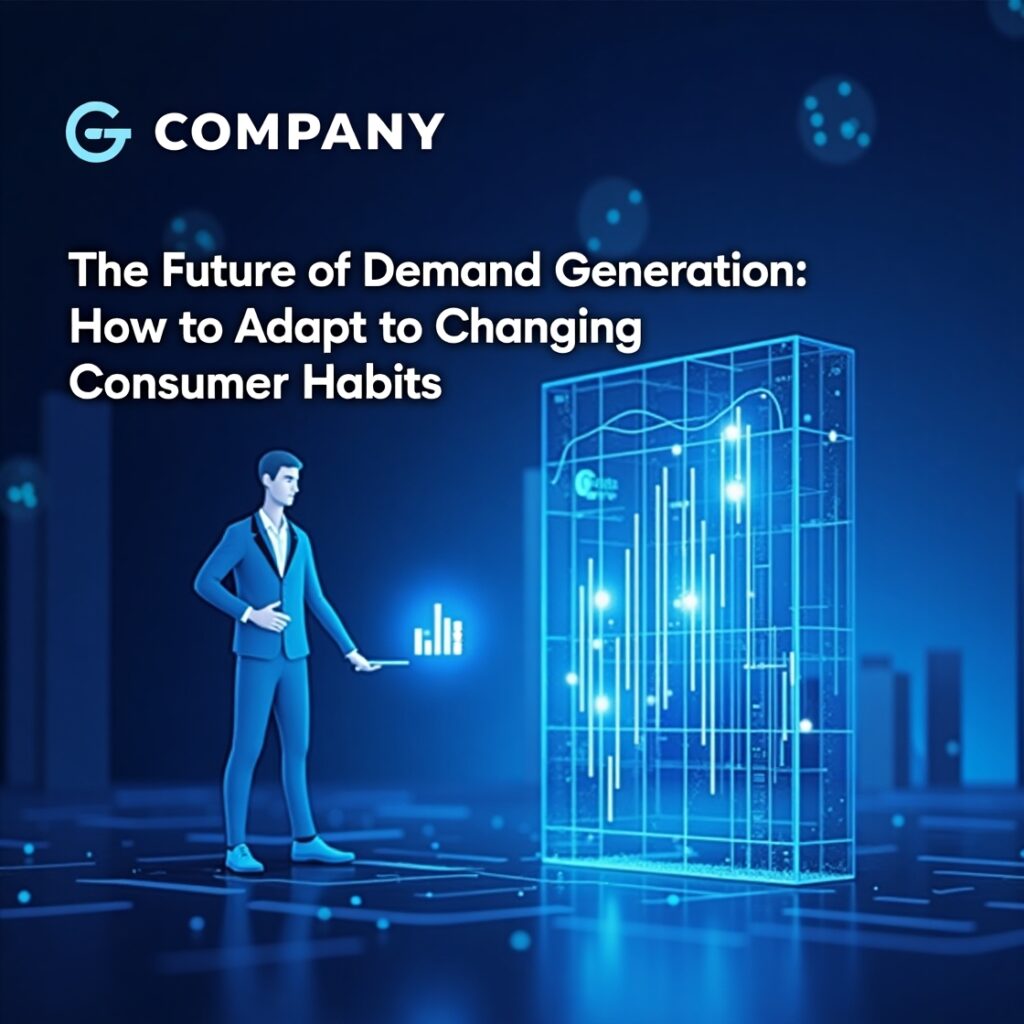
Many B2B marketers still rely on outdated methods like gated content and cold outreach, only to find that conversion rates are plummeting. Why? Because the buyer’s journey has changed. Prospects prefer to conduct their own research, engage with brands on their own terms, and expect seamless digital experiences.
This article explores the future of demand generation and provides a clear, practical roadmap for adapting to this new landscape. From embracing a content-driven strategy to leveraging intent data and respecting privacy preferences, we’ll show how B2B marketing leaders can realign their efforts with modern buyer behavior—and build scalable demand that lasts.
Why Traditional Lead Generation Is Losing Its Edge
Once-effective tactics like cold emails, generic nurture streams, and gated PDFs are struggling to produce results in a buyer-controlled market. Here’s why:
- Buyers control the journey: Nearly 70% of the B2B buying process now happens before a prospect talks to sales.
- Information is abundant: Prospects can access competitor reviews, how-to content, and user feedback with a few clicks.
- Trust is fragile: Overly aggressive data collection or irrelevant outreach damages brand credibility.
Marketing directors face the challenge of driving pipeline without overstepping buyer boundaries. This requires a shift from lead capture to demand creation—providing value upfront, earning attention, and guiding prospects through a frictionless path to purchase.
Embracing a Customer-Centric Demand Generation Strategy
To stay competitive, B2B marketing teams must adapt to a more holistic, customer-driven model. Here’s how to start:
1. Prioritize Value Over Volume
Instead of focusing on the number of leads generated, center your strategy on delivering helpful, educational contentthat aligns with your target audience’s needs.
Tips:
- Build ungated resource hubs or interactive tools that solve real problems.
- Repurpose long-form assets (like whitepapers) into digestible videos, infographics, or LinkedIn posts.
- Invest in thought leadership that speaks directly to buyer pain points.
2. Lean Into Intent Data
Modern buyers leave digital breadcrumbs that reveal their interests and readiness to buy. Use intent data and behavioral signals to identify high-quality prospects and personalize outreach at scale.
Example Use Cases:
- Trigger nurture sequences when a user visits pricing pages or product comparison content.
- Tailor messaging based on job title, company size, or stage in the funnel.
- Partner with platforms that specialize in B2B intent signals for deeper insights.
3. Align Sales and Marketing Teams
Demand generation can’t succeed in a silo. Sales and marketing must work together to define ideal customer profiles (ICPs), account targeting strategies, and shared performance metrics.
How to Improve Alignment:
- Hold regular sync meetings to review campaign performance and share feedback.
- Use shared dashboards to track pipeline influence, not just MQLs.
- Co-create sales enablement content to support every stage of the buyer’s journey.
Adapting to Data Privacy and Trust Expectations
Today’s buyers are wary of how their data is collected and used. With regulations like GDPR and CCPA tightening controls, respecting privacy is no longer optional—it’s a competitive advantage.
What Marketers Should Do:
- Be transparent: Let users know how their data will be used and give them control.
- Reduce friction: Don’t gate every asset—use progressive profiling or offer value upfront.
- Focus on first-party data: Collect insights directly from your audience through surveys, preferences, and engagement.
By honoring trust, marketers can build lasting relationships that lead to deeper engagement and conversion.
Meeting Self-Service Expectations
The rise of digital-native buyers means more prospects expect to self-educate, compare, and even purchase without speaking to a salesperson. To meet these expectations:
Key Strategies:
- Create on-demand demos, explainer videos, and ROI calculators.
- Build intuitive product pages that answer common questions clearly.
- Offer real-time chat or knowledge base support instead of requiring contact forms.
Empowering buyers with the information they need—when they need it—creates a smoother journey and strengthens brand loyalty.
Building a Scalable Demand Engine for the Future
To future-proof your demand generation efforts, adopt a strategy that’s not just reactive—but sustainable and adaptable. Here’s a framework to follow:
- Audit your current funnel: Identify friction points where buyers drop off.
- Invest in content and community: These are long-term assets that grow in value over time.
- Optimize for buyer intent, not marketing vanity metrics: Track revenue contribution, pipeline acceleration, and customer engagement.
- Test and iterate: Use A/B testing, feedback loops, and performance data to continuously refine your approach.
Final Thoughts
The future of demand generation lies in understanding what buyers want—and delivering it with authenticity, agility, and empathy. For B2B marketing directors, adapting to these changing consumer habits isn’t just about keeping up—it’s about leading the shift.
By prioritizing value over volume, respecting privacy, embracing digital behavior, and aligning closely with sales, you can build a scalable engine that drives demand and earns trust in the modern age.
Want to dig deeper? Explore our guide on building a content-led growth strategy or connect with peers in our marketing leadership community to share insights and ideas.
Pipeline Over Leads – Is the Metric That Matters Most for B2B
Why Pipeline Over Leads Is the Metric That Matters Most in 2025 for B2B Marketing Success
B2B marketing in 2025 is no longer just about generating leads—it’s about generating the right leads. More specifically, it’s about building a strong, high-intent sales pipeline. In an increasingly data-driven and revenue-focused environment, the age-old metric of “lead volume” has taken a back seat to a more strategic KPI: pipeline over leads contribution.
For B2B Marketing Directors, this shift represents both a challenge and an opportunity. On one hand, there’s growing pressure to align with sales teams and prove marketing’s direct impact on revenue. On the other, there’s a chance to lead meaningful change by refining how success is measured, focusing on opportunities with real buying intent rather than vanity metrics like form fills.
This article explores why pipeline over leads has become the primary marketing metric in 2025, the problems that arise from misalignment between sales and marketing, and how to recalibrate your strategy for long-term, revenue-driven success.
The Problem with Chasing Leads in 2025
Let’s face it: not all leads are created equal.
Many B2B marketing teams still measure success by the sheer number of leads generated. But when those leads don’t convert—or worse, aren’t even qualified—marketing’s efforts can feel disconnected from actual business outcomes. Sales teams become frustrated, resources get wasted, and finger-pointing ensues.
This misalignment is often rooted in:
- Overreliance on top-of-funnel metrics like downloads, form completions, or event signups
- Lack of a shared definition of a qualified lead
- Minimal collaboration between marketing and sales during campaign planning
- KPIs that reward volume over value
In 2025, high-growth companies are flipping the script. They’re asking: Is this lead likely to buy? If the answer is no, it doesn’t belong in your pipeline—no matter how many MQL points it racks up.
Pipeline Over Leads: The Revenue Metric That Unites Teams
When you shift focus from leads to pipeline, you start measuring what truly matters: potential revenue.
Pipeline contribution refers to the portion of the sales pipeline that originated from marketing efforts. It shows how much pipeline marketing is generating, not just how many people clicked on an ad or downloaded an eBook.
Here’s why this matters:
- It creates alignment. Sales and marketing work together toward a shared goal: revenue growth.
- It focuses efforts on buyers with intent. You prioritize actions that bring in sales-ready opportunities.
- It increases accountability. Marketing must understand sales cycles, personas, and buyer journeys.
- It improves efficiency. You waste less time and money on campaigns that attract unqualified leads.
According to a 2025 Gartner report, B2B companies that align marketing KPIs with pipeline contribution see a 30% increase in conversion rates and a 25% decrease in acquisition costs.
Signs You’re Still Lead-Centric—and How to Fix It With Pipeline Over Leads
Are you still stuck in a lead-driven mindset? Look for these red flags:
- Your primary marketing goal is to “generate X number of MQLs”
- Sales often rejects or ignores your leads
- You celebrate traffic spikes without understanding their downstream impact
- Campaigns are launched without input from sales
But How to transition to a pipeline-first mindset:
- Redefine success metrics. Start tracking marketing-sourced pipeline and SQL conversions.
- Collaborate early with sales. Co-create ICPs (Ideal Customer Profiles) and define what a high-quality opportunity looks like.
- Implement lead scoring based on buying behavior, not just engagement.
- Prioritize intent signals—such as pricing page views, product demo requests, or late-stage content interactions.
- Invest in attribution tools to measure the actual impact of marketing on pipeline growth.
Building a Pipeline over leads-Driven Marketing Strategy
Making the shift requires more than just changing your KPIs—it demands a fundamental transformation of your marketing approach. Here’s how to do it:
Align Marketing and Sales Around Shared Goals
Start with regular meetings between your marketing and sales leaders. Discuss campaign ideas, define qualification criteria, and review pipeline metrics together.
Create a service-level agreement (SLA) that outlines:
- What marketing promises to deliver (e.g., number of SQLs per quarter)
- What sales commits to follow up on
- How feedback will be shared and implemented
Focus on Revenue-Generating Channels
Not all channels drive pipeline equally. In 2025, leading B2B marketers are doubling down on:
- Account-Based Marketing (ABM): Targeting high-fit accounts with personalized outreach
- Intent data platforms: Identifying prospects actively researching solutions in your category
- Product-led content: Offering demos, ROI calculators, and success stories that attract bottom-funnel interest
Use Full-Funnel Content to Nurture High-Intent Leads
Rather than flooding the top of the funnel, focus on content that moves decision-makers through the buyer’s journey. Examples include:
- Case studies and use cases
- Comparison guides
- Webinars with sales participation
- Customer interviews or ROI showcases
This approach not only nurtures genuine interest but also qualifies leads faster.
Measuring How Pipelines Over Leads Matters in 2025
Marketing’s value is no longer proven by volume—it’s demonstrated through impact.
Here are the metrics modern B2B marketers are using to track performance:
- Pipeline Over Leads Contribution: Total value of opportunities sourced by marketing
- Conversion Rate to Opportunity: MQL to SQL to closed-won
- Sales Cycle Velocity: How fast leads progress once marketing hands them off
- Win Rate of Marketing-Sourced Deals: Indicator of lead quality
- Revenue Influenced: Total revenue touched by marketing interactions
You can still track form fills and content downloads—but only as directional signals, not end goals.
Conclusion: Shift from Counting Leads to Creating Revenue
In 2025, the most successful B2B marketing directors are those who embrace the shift from lead generation to pipeline generation. By aligning more closely with sales, focusing on high-intent opportunities, and measuring impact based on revenue contribution, you build not just a better funnel—but a stronger business.
If you’re ready to make this shift, start by redefining your success metrics and opening up new lines of collaboration with sales. The more tightly your teams align around shared revenue goals, the more impactful your marketing efforts will become.
Why LinkedIn is New Hub for B2B Demand Generation :
LinkedIn Is the New Hub for B2B Demand Generation—and How to Stand Out
LinkedIn is no longer just a digital resume. For B2B marketing directors, it’s rapidly evolving into the top-performing channel for demand generation. With over 1 billion users and a robust suite of targeting tools, the platform offers a unique space to connect with decision-makers, showcase thought leadership, and drive qualified leads that’s how LinkedIn is New Hub for B2B Demand Generation.
But there’s a catch.
As more companies jump on the LinkedIn content bandwagon, the feed is becoming crowded—and that means your messages are at risk of getting lost. Thought leadership posts start to sound alike. Engagement dips. And the ROI on your content investments becomes harder to measure.
So, how do you rise above the noise?
This article breaks down Why LinkedIn is New Hub for B2B Demand Generation and offers strategic, actionable ways to ensure your brand stands out in an increasingly competitive environment. From content frameworks to engagement tactics, we’ll explore what actually works—and what to avoid—so your LinkedIn presence delivers real pipeline impact.
Why LinkedIn Is Dominating the B2B Demand Gen Landscape
The appeal of LinkedIn for B2B marketers lies in its alignment with how buying decisions are made today. The modern B2B buyer is skeptical, self-reliant, and values authentic insights over sales pitches.
Here’s why LinkedIn is becoming the preferred platform:
- Targeted Reach: LinkedIn’s ad platform allows marketers to reach specific industries, job titles, company sizes, and more. No other platform offers such granular professional targeting.
- Professional Mindset: Unlike other social platforms, users on LinkedIn are in a business mindset. They’re more open to consuming long-form content, joining professional discussions, and engaging with brands.
- Thought Leadership Ecosystem: LinkedIn rewards meaningful, high-quality content. From native articles to engaging carousels and video posts, there’s room for all formats that build authority.
These factors make it ideal for full-funnel B2B strategies—from awareness to consideration to conversion.
The Growing Challenge: Everyone’s Doing the Same Thing
With the rise in LinkedIn’s popularity for B2B demand generation, the feed is now saturated with:
- Generic “thought leadership” posts
- Sales-y self-promotion disguised as insights
- Recycled industry trends with little originality
The result? Content fatigue.
Buyers are scrolling past what used to work. Metrics like impressions may look healthy, but engagement and lead quality often decline. For B2B marketing directors, the challenge is twofold:
- Standing out among a sea of sameness.
- Driving measurable results while maintaining brand integrity.
So, what’s the solution?
How to Make Your LinkedIn Strategy Stand Out and Convert
1. Shift From Broad Content to Niche Positioning
Don’t aim to speak to everyone. Instead, become a go-to resource for a specific audience or challenge within your market.
Practical Tips:
- Identify 1-2 “pillar problems” your ideal buyer cares about most.
- Develop a content series (e.g., weekly posts or videos) around solving that problem.
- Use niche hashtags and tag relevant influencers to increase visibility.
Example: If you’re targeting mid-sized SaaS companies struggling with churn, focus your content on retention strategies, not just general SaaS growth tips.
2. Prioritize Depth Over Virality
It’s tempting to chase likes, but surface-level posts won’t generate demand. Deep, educational content fosters trust and drives action.
Ways to Add Depth:
- Share frameworks, models, or behind-the-scenes insights from your team.
- Break down case studies or client results with context (without turning it into a sales pitch).
- Turn long-form posts into multi-slide carousels for better engagement.
Pro Tip: Use the “Problem → Insight → Takeaway” structure in posts to ensure every piece delivers value.
3. Leverage Employee Advocacy for Authentic Reach
Your company page isn’t enough. People trust people more than brands.
Encourage your subject matter experts, sales team, and leadership to share thought leadership content from their own profiles. These posts often outperform branded content in both reach and engagement.
What Works:
- Training employees to write engaging LinkedIn posts.
- Creating a shared content calendar with customizable post templates.
- Celebrating internal milestones or learnings publicly.
4. Use LinkedIn’s Native Tools to Your Advantage
Don’t just post. Engage with the full suite of tools LinkedIn offers:
- Newsletters: Build an audience with recurring, value-rich insights.
- Events + Live: Host webinars or live Q&As natively to tap into LinkedIn’s distribution power.
- Polls: Spark interaction while gaining real-time audience feedback.
These tools also signal to the algorithm that your profile is active and valuable—boosting visibility.
5. Measure What Matters: Demand, Not Just Vanity Metrics
Likes and comments are great—but what matters is pipeline impact.
To connect your LinkedIn efforts to demand generation goals:
- Use UTM parameters to track post-driven traffic and conversions.
- Monitor account engagement with tools like LinkedIn Sales Navigator or 6sense.
- Align LinkedIn KPIs with your broader ABM or inbound campaigns.
Key Metrics to Watch:
- % of target accounts engaging
- Conversion rates from post click-throughs
- Comments or DMs from qualified prospects
Final Thoughts: Competing on LinkedIn Means Earning Attention, Not Buying It
LinkedIn is undoubtedly the new hub for B2B demand generation—but it’s also becoming more competitive by the day. Simply showing up isn’t enough.
To succeed, B2B marketing directors must craft differentiated content, empower their internal advocates, and use data to fine-tune their efforts. The brands winning on LinkedIn today are the ones delivering real value—consistently, authentically, and with a strategy tailored to their audience.
Looking to sharpen your LinkedIn demand gen strategy? Explore proven frameworks and insights in our content library to stay ahead of the curve.
Building Communities, Not Just Pipelines:
Building Communities, Not Just Pipelines: How B2B Marketers Are Redefining Demand Generation
The days of relying solely on cold outreach and gated content to drive leads are fading fast. Today’s B2B Marketing Directors face a pivotal shift: from funnel-focused demand generation to building genuine, long-lasting relationships through community engagement.
At the heart of this evolution is a response to buyer behavior.Decision-makers are more skeptical, more informed, and less responsive to traditional sales tactics. Instead, they gravitate toward brands that foster trust, create value before the sale, and cultivate vibrant communities of peers and thought leaders. But here’s the challenge: how do you prove the ROI of something as intangible as “community”?
In this article, we explore this new era of demand generation—what it means, why it matters, and how you can align your strategy to create measurable value for stakeholders while fostering authentic engagement. Let’s dive into how building communities isn’t just a feel-good idea—it’s a powerful growth engine.
Why Traditional Demand Generation Is Losing Its Edge
While lead-generation campaigns still play a role in marketing, they’re increasingly becoming a baseline rather than a differentiator. Today’s B2B buyers:
- Conduct independent research before engaging with sales.
- Prioritize peer recommendations and third-party reviews.
- Expect brands to contribute meaningfully to their professional communities.
The result? Marketing pipelines built solely on lead magnets, webinars, and nurture emails often fall short. They can inflate metrics without driving real buyer intent or trust.
Instead, what’s needed is a more human-centered approach—one that builds affinity before the pitch.
The Community-Led Approach to Demand Generation
What Is a Marketing Community, Really?
A community isn’t just a LinkedIn group or a branded Slack channel.But It’s an ecosystem where your audience finds value in participating—through learning, networking, and contributing. And importantly, it’s an ongoing relationship, not a one-off campaign.
Examples of modern B2B building communities include:
- Executive peer groups with curated discussions.
- Customer advisory boards that inform product direction.
- Online hubs where members share insights, challenges, and wins.
Why Community Works for B2B Demand Generation
- Trust multiplies reach: People trust people more than brands. A recommendation within a trusted network can outperform even the best campaign.
- Retention improves: Customers who feel part of a community are less likely to churn—and more likely to advocate.
- Pipeline quality increases: Leads generated through building communities engagement often show stronger intent and alignment.
How to Shift from Pipeline-First to Community-First Marketing
Making the shift doesn’t mean abandoning your funnel. It means enhancing it with a community strategy that supports long-term engagement and brand equity. Because here’s how:
1. Start With Listening
Before you build, listen. Identify where your audience already gathers and what topics matter most. Use:
- Social listening tools (e.g., LinkedIn, Twitter)
- Customer feedback
- Conversations with sales or customer success teams
2. Define Your Community’s Purpose
Avoid the trap of creating a community that exists just to promote your product. Instead, ask:
- What challenges does our audience face?
- How can we facilitate peer learning or professional growth?
- What unique value can we offer that they won’t find elsewhere?
3. Choose the Right Format
Not every community needs to be a full-blown platform. So start with a format that fits your team’s capacity and audience preferences:
- Private LinkedIn or Slack groups
- Roundtable events or small virtual meetups
- Branded media (podcasts, newsletters, forums)
4. Create Content With Your Community, Not Just For Them
Community content should be co-created, not top-down. Involve your audience in:
- Sharing user-generated content
- Participating in AMAs or panels
- Providing feedback on ideas or early product features
This increases engagement and makes members feel invested in your brand’s journey.
5. Track the Right Metrics
Proving the ROI of community can be tricky, but not impossible. Look beyond MQLs and track:
- Community growth (membership, engagement)
- Influence on pipeline (number of leads influenced by community touchpoints)
- Retention and expansion rates among community members
- Brand sentiment and referral traffic
Use attribution models that include multi-touch journeys, and align with revenue teams to show how community engagement supports pipeline progression.
Real-World Example: How One SaaS Brand Grew with Community-Led Demand
Consider a mid-sized SaaS company targeting enterprise IT leaders. Instead of launching yet another whitepaper campaign, they created a private forum for tech executives to exchange security best practices—moderated by a neutral third-party facilitator.
Within months:
- Forum members contributed content that reached thousands on LinkedIn.
- Community discussions informed a new product feature, reducing time-to-value.
- Sales reported a 30% increase in demo-to-close rate among active members.
Because the community wasn’t a sales channel—it was a value engine—it generated goodwill, awareness, and qualified pipeline organically.
Getting Stakeholder Buy-In for Community-Led Marketing
One of the biggest hurdles B2B marketers face is justifying community investments to leadership focused on hard numbers.
Here’s how to bridge the gap:
- Speak their language: Tie community goals to business KPIs like LTV, CAC, or retention.
- Pilot before you scale: Start with a small, high-value cohort. Prove impact before expanding.
- Document wins: Track member feedback, engagement rates, and stories that show influence on sales cycles.
- Align with sales and success teams: Community shouldn’t be a silo. Integrate it into your broader GTM strategy.
Conclusion: Building Community Is the Future of B2B Demand Generation
The shift from pipeline-filling to community-building isn’t just a trend—it’s a reflection of how modern buyers engage, learn, and make decisions. For B2B Marketing Directors, it’s both a challenge and an opportunity.
By fostering trust, driving authentic engagement, and aligning with your audience’s needs, you can not only generate more meaningful demand—but also prove lasting value to stakeholders. Community is no longer a nice-to-have; it’s a strategic imperative for sustainable growth.
Looking to learn more? Explore practical frameworks and case studies from brands already thriving in the community-led era of marketing.
“Unlocking the Potential: How Intent-Based Marketing Drives B2B Lead Generation”
As the B2B landscape becomes increasingly competitive, companies are looking for innovative ways to generate leads and attract new customers. One of the most powerful tools available to B2B marketers today is intent-based marketing. By leveraging intent data, companies can identify prospects who are actively researching products or services related to their business and create targeted campaigns that speak directly to their needs and interests.
What is Intent-Based Marketing?
Intent-based marketing is a data-driven approach to marketing that uses insights into a prospect’s online behavior to create personalized and targeted campaigns. By analyzing search behavior, website visits, and other digital interactions, marketers can gain a deep understanding of a prospect’s intent, or their specific needs and interests.
For example, if a company sells accounting software, they might use intent data to identify prospects who have searched for “cloud-based accounting software” or “accounting software for small businesses”. Armed with this information, the company can create targeted ads or email campaigns that address the prospect’s specific needs and pain points.
How Intent-Based Marketing Helps with B2B Lead Generation
Intent-based marketing can play a key role in B2B lead generation by helping companies identify and target prospects who are most likely to convert. By focusing on prospects who are in the middle or bottom of the sales funnel, companies can tailor their messaging to address specific pain points and objections, making it more likely that the prospect will move forward in the buying process.
For example, if a company sells IT consulting services, they might use intent data to identify prospects who have visited websites related to cybersecurity or cloud computing. They can then create targeted content or email campaigns that speak directly to the prospect’s concerns around security or cloud migration.
By tailoring their messaging to specific pain points and interests, companies can increase the effectiveness of their marketing efforts and generate higher quality leads. In fact, research has shown that companies that use intent data to inform their marketing strategies see a 2-3x increase in the conversion rates of their campaigns.
How to Use Intent-Based Marketing for B2B Lead Generation
To get started with intent-based marketing, B2B companies should first identify the key topics and keywords related to their business. They can then use a variety of tools and platforms, such as Google AdWords, LinkedIn, or Bombora, to gather intent data on prospects who are searching for or engaging with content related to those topics.
Once they have identified prospects who are in the middle or bottom of the sales funnel, companies can create targeted campaigns that speak directly to the prospect’s needs and interests. This might include personalized email campaigns, targeted ads, or even custom landing pages that address specific pain points and objections.
It’s important to note that intent-based marketing is most effective when it is used in conjunction with other marketing strategies, such as content marketing, social media marketing, and account-based marketing. By combining these approaches, companies can create a comprehensive lead generation strategy that reaches prospects at every stage of the sales funnel.
Conclusion
Intent-based marketing is a powerful tool for B2B lead generation that can help companies identify and target prospects who are most likely to convert. By leveraging intent data to create personalized and targeted campaigns, companies can increase the effectiveness of their marketing efforts and generate higher quality leads. To get started with intent-based marketing, companies should identify the key topics and keywords related to their business and use a variety of tools and platforms to gather intent data on their prospects.
“5 Steps to Gauge Your Buyer Persona Profile for Effective B2B Lead Generation”
When it comes to B2B lead generation, understanding your target audience is key to developing effective marketing strategies. One way to gain insight into your target audience is by creating buyer personas. A buyer persona is a semi-fictional representation of your ideal customer, based on market research and real data about your existing customers.
To gauge a buyer persona profile in B2B lead generation, consider the following:
- Define your buyer persona: Begin by identifying the key characteristics of your target audience, including their job title, industry, company size, pain points, goals, and challenges. Use market research and customer feedback to inform your understanding of your target audience.
- Use data to validate your assumptions: Collect and analyze data on your existing customers to validate your assumptions about your target audience. This data may include demographics, job titles, company size, revenue, and purchasing behavior.
- Conduct interviews and surveys: Talk to your existing customers and prospects to gain a deeper understanding of their pain points, goals, and challenges. Use this feedback to refine your buyer persona profile and inform your marketing strategies.
- Use social media and website analytics: Use social media and website analytics to understand how your target audience interacts with your brand online. This data can help you refine your messaging and content strategy to better resonate with your target audience.
- Continuously update and refine your buyer personas: As your business evolves and your target audience changes, it’s important to update and refine your buyer personas. Regularly collect feedback from your customers and prospects to ensure your buyer personas remain relevant and effective.
By taking these steps, you can develop a deep understanding of your target audience and create effective marketing strategies that resonate with your ideal customers. Remember that B2B lead generation is an ongoing process, and it’s important to continuously refine and adjust your strategies to meet the evolving needs of your target audience.
“Programmatic Demand Generation: The Key to Unlocking B2B Lead Generation Success”
As the B2B landscape becomes increasingly competitive, demand generation is more important than ever for businesses to attract, engage, and convert potential leads. One approach to demand generation that has gained popularity in recent years is programmatic advertising. Here are some of the benefits of programmatic demand generation in B2B lead generation that businesses should consider:
- Targeted Audience Reach: Programmatic advertising allows B2B marketers to target specific audiences based on various parameters such as online behavior, demographics, and firmographics. This approach increases the chances of reaching the right audience and generating quality leads.
- Cost-Effective: Programmatic advertising can be cost-effective compared to traditional advertising methods. With programmatic advertising, marketers can set budgets and bid for ad impressions based on their desired audience, which can help reduce the cost per lead.
- Measurable Results: Programmatic advertising platforms offer robust analytics and reporting capabilities, allowing B2B marketers to track campaign performance, optimize campaigns in real time, and measure the ROI of their demand generation campaigns.
- Personalized Messaging: Programmatic advertising enables B2B marketers to serve personalized messages to their target audience, which can improve engagement and conversion rates. Customized messaging also helps build trust and credibility with potential leads.
- Scale: Programmatic demand generation allows B2B marketers to scale their lead generation efforts and reach a larger audience, without sacrificing targeting or effectiveness. This approach enables businesses to expand their reach and achieve their lead-generation goals.
In conclusion, programmatic demand generation can help B2B businesses generate more quality leads, optimize their campaigns for better ROI, and reach their target audience more effectively. With the right approach, businesses can take advantage of the benefits of programmatic advertising to achieve their demand generation goals.
Mastering the Art of Demand Capturing from Cold Accounts:
Capturing demand from cold accounts can be a challenging task for any B2B company. In this blog, we will explore some effective strategies for focusing on demand capturing only from cold accounts.
- Identify your ideal customer: The first step in capturing demand from cold accounts is to understand who your ideal customer is. Analyze your existing customer base and look for commonalities in their demographics, industry, and pain points. This will help you to identify the type of businesses you should be targeting.
- Develop a compelling value proposition: Once you have identified your ideal customer, the next step is to develop a compelling value proposition that speaks directly to their pain points. Make sure your messaging is clear, concise, and emphasizes the benefits of your product or service.
- Leverage digital channels: In today’s digital age, there are many channels available to reach cold accounts. Develop a strong online presence by creating a website that highlights your value proposition, a blog that provides educational content, and social media accounts to engage with potential customers.
- Utilize email marketing: Email marketing is an effective way to reach out to cold accounts. Develop targeted email campaigns that speak directly to the pain points of your ideal customer. Personalize your emails and include a clear call-to-action that encourages the recipient to take action.
- Offer free trials or demos: Offering a free trial or demo can be a great way to capture demand from cold accounts. This allows potential customers to experience your product or service first-hand, which can help to build trust and increase the likelihood of a purchase.
- Develop a referral program: Referral programs can be a powerful tool for generating demand from cold accounts. Encourage your existing customers to refer other businesses that they think could benefit from your product or service.
- Attend industry events: Attending industry events can be a great way to connect with potential customers face-to-face. Make sure to have a strong presence at the event, including branded materials and knowledgeable staff who can answer questions and provide more information about your product or service.
In conclusion, capturing demand from cold accounts requires a strategic and targeted approach. By identifying your ideal customer, developing a compelling value proposition, utilizing digital channels, offering free trials or demos, developing a referral program, and attending industry events, you can effectively capture demand and grow your business.
Lead generation with the power of social media marketing.
Social Media Marketing: A Powerful but Misunderstood Tool for B2B Lead Generation
In the B2B world, social media marketing often sparks debate. While many B2C brands have mastered the art of engaging audiences and driving quick conversions, B2B companies frequently struggle to quantify its impact—especially when it comes to lead generation. Long sales cycles, multi-touch buyer journeys, and complex attribution models make it difficult to clearly connect a LinkedIn post or Twitter thread to closed revenue.
This disconnect leads many B2B marketers to either underutilize social media or abandon it entirely. But here’s the reality: social platforms can be a powerful driver of qualified leads—if you know how to use them strategically.
In this article, we’ll explore how social media marketing can fuel B2B lead generation, break down the barriers to measuring ROI, and offer actionable strategies that align with the unique needs of B2B marketing directors and organizations.
Why Social Media Marketing Matters for B2B
Contrary to the myth that “social media is for B2C,” B2B decision-makers are active online—and they’re looking for content that educates, informs, and builds trust.
Key benefits of social media marketing for B2B include:
- Brand visibility among niche, high-value audiences
- Real-time engagement with prospects and industry influencers
- Content amplification that drives traffic to lead-generating assets (eBooks, webinars, case studies)
- Social proof through testimonials, reviews, and employee advocacy
Platforms like LinkedIn, Twitter (X), and even YouTube provide an opportunity to influence early-stage research and nurture long-term relationships—crucial in B2B environments.
The ROI Challenge: Why Measuring Social Media Impact Is Hard in B2B
One of the biggest obstacles B2B marketers face is the inability to directly link social media activity to lead conversions and closed deals.
Here’s why this happens:
- Longer sales cycles mean engagement today might not convert for months
- Multiple touchpoints across various channels make attribution messy
- Offline interactions (like calls, demos, or trade shows) blur the digital trail
As a result, social media’s impact is often underreported or misunderstood. But that doesn’t mean it’s ineffective—it means we need better measurement strategies.
Solving the ROI Problem: Smart Strategies for B2B Social Media Success
To maximize ROI from social media marketing in B2B, companies need a shift in mindset and methodology. Here’s how:
1. Set Clear, Stage-Specific Goals
Not every social post needs to drive a demo request. Instead, align social efforts with different funnel stages:
- Top of Funnel (TOFU): Brand awareness, thought leadership
- Middle of Funnel (MOFU): Engagement, traffic to gated content
- Bottom of Funnel (BOFU): Retargeting, testimonials, case studies
Tip: Use custom UTM parameters to track clicks and conversions across your funnel.
2. Focus on the Right Platforms
For B2B lead generation, LinkedIn remains the most effective platform. Why?
- Targeting based on job title, company size, and industry
- Professional context encourages decision-makers to engage
- Sponsored content and InMail ads offer precision at scale
Twitter and YouTube also work well for industry education and brand visibility, especially when integrated with SEO and content marketing.
3. Use Social Listening and Engagement to Qualify Leads
Social media isn’t just a broadcast tool—it’s a research and qualification engine.
- Monitor conversations around industry pain points, trends, or competitors
- Identify intent signals based on engagement (e.g., clicking links, commenting on thought leadership)
- Route insights to sales teams for follow-up
4. Combine Social with Content-Driven Lead Magnets
One of the most effective B2B social strategies is to pair high-value content with compelling calls to action. Examples include:
- Sharing an industry report via LinkedIn post with a link to download
- Promoting a webinar with paid ads targeted at key personas
- Using short-form video to tease a full case study
Make sure landing pages are optimized for conversion and mobile-friendly.
5. Build a Multi-Touch Attribution Model
Don’t rely on last-click attribution. Tools like HubSpot, Salesforce, and Google Analytics 4 can help you build a multi-touch attribution model that shows how social contributes throughout the buyer journey.
You can also use:
- Lead scoring based on social engagement
- CRM notes tagging where leads were first engaged (e.g., “LinkedIn webinar campaign”)
- Tracking pixels on social platforms to follow user behavior post-click
Real-World Example: Turning Social Engagement into Qualified Leads
A B2B SaaS company targeting HR leaders used LinkedIn to distribute a weekly “HR Insights” newsletter. Posts featured snippets from the newsletter and links to download in full.
Here’s what worked:
- Lead capture forms were embedded on the landing page
- Targeted ads promoted the post to HR directors at mid-market firms
- Engagement was monitored, and high-interest leads were flagged in CRM
The result? A 23% increase in marketing qualified leads (MQLs) from social media within 3 months—without a large ad budget.
Best Practices for Long-Term Success
For sustainable lead generation through social media, B2B marketers should:
- Maintain consistent posting with valuable, audience-relevant content
- Encourage employee advocacy to extend reach organically
- A/B test ad formats, messaging, and audiences
- Regularly analyze performance and adjust based on real insights
Remember, building trust and authority takes time—but when done right, the payoff is measurable and significant.
Conclusion: Social Media Marketing Can Drive Real B2B Results
While ROI measurement can be complex in the B2B space, social media marketing—when executed strategically—is a powerful lead generation engine. By aligning content with the buyer’s journey, using smarter attribution models, and focusing efforts on the right platforms, B2B companies can bridge the gap between social engagement and pipeline growth.
Don’t let uncertainty about measurement hold your team back. Instead, refine your strategy, track what matters, and embrace the long-term value social media brings to your marketing mix.
Why full-funnel Marketing is important!
As a CEO, I understand that generating revenue and achieving business goals is crucial for any organization’s success. To achieve this, companies must engage with their customers throughout the entire buyer journey, from initial awareness to final purchase, and beyond. This is where full-funnel marketing comes in.
Full-funnel marketing is a comprehensive approach to marketing that covers the entire customer journey, from initial awareness to final purchase and beyond. In B2B marketing, this approach is especially important as it allows businesses to engage with their target audience at each stage of the funnel and tailor their marketing efforts accordingly. Here are some reasons why full-funnel marketing is important in B2B:
- It increases brand awareness: Full funnel marketing helps to increase brand awareness by reaching potential customers at the top of the funnel. By creating content that educates and informs, businesses can attract potential customers and build trust in their brand.
- It generates leads: Once potential customers are aware of a brand, the next step is to generate leads. Full funnel marketing helps to do this by providing targeted content and campaigns that capture the attention of potential customers and entice them to take action.
- It nurtures leads: Not all leads are ready to purchase immediately. Full funnel marketing helps to nurture leads by providing them with relevant content and engaging with them at each stage of the funnel. This can help build trust in a brand and increase the likelihood of a sale.
- It increases conversion rates: Full funnel marketing can help increase conversion rates by providing targeted messaging and content that speaks to the specific needs of potential customers. This can help move them through the funnel and closer to a sale.
- It enhances customer retention: Full funnel marketing doesn’t stop at the point of sale. It continues to engage with customers post-sale, providing them with valuable information, support, and resources to enhance their experience with the brand. This can help increase customer retention and loyalty.
In conclusion, full-funnel marketing is crucial for any B2B organization that wants to attract, engage, and retain customers. By providing targeted messaging and content at each stage of the funnel, businesses can increase brand awareness, generate leads, nurture leads, increase conversion rates, and enhance customer retention.
Revolutionizing B2B Lead Generation: The Crucial Role of AI
In today’s digital age, businesses are constantly seeking ways to improve their lead-generation strategies to increase revenue and gain a competitive advantage. One of the most innovative and effective ways to do this is through the use of artificial intelligence (AI). AI has revolutionized the way businesses generate leads, especially in the B2B space, by providing new insights and opportunities for engagement that were previously impossible.
Here are some of the ways AI plays a crucial role in B2B lead generation:
- Predictive Analytics
AI-based predictive analytics tools can help businesses identify potential leads by analyzing data from various sources, including social media, website behavior, and email engagement. These tools use machine learning algorithms to analyze the data and predict which prospects are most likely to convert into customers. By identifying these high-potential leads, businesses can focus their resources on the most promising prospects and improve their chances of success.
Chatbots and Virtual Assistants
- Chatbots and virtual assistants have become increasingly popular in recent years, and for good reason. These AI-powered tools can handle a variety of tasks, including answering common questions, providing product recommendations, and even booking appointments. By automating these tasks, businesses can free up their sales teams to focus on more complex and strategic activities. Additionally, chatbots and virtual assistants can provide personalized experiences to prospects, improving the chances of conversion.
- Lead Scoring and Qualification
AI-powered lead scoring and qualification tools can help businesses identify which prospects are most likely to become customers. These tools use data analysis and machine learning algorithms to score leads based on their behavior, demographics, and other relevant factors. By automating this process, businesses can save time and resources while also improving the accuracy of their lead scoring and qualification.
- Content Personalization
Personalization is essential in today’s marketing landscape, and AI-powered content personalization tools can help businesses create more relevant and engaging content for their prospects. These tools use data analysis and machine learning to tailor content to the specific interests and needs of individual prospects, increasing the chances of engagement and conversion.
- Sales Forecasting
AI-powered sales forecasting tools can help businesses predict future sales based on historical data and market trends. By analyzing this data, these tools can provide businesses with insights into which products or services are likely to sell well in the future, allowing them to adjust their marketing and sales strategies accordingly.
In conclusion, AI has become an essential tool in B2B lead generation. By leveraging predictive analytics, chatbots, and virtual assistants, lead scoring and qualification, content personalization, and sales forecasting, businesses can improve the efficiency and effectiveness of their lead-generation strategies. As AI continues to evolve, we can expect to see even more innovative and powerful tools emerge that will further revolutionize the way we generate leads and grow our businesses.
How to Transform your lead to Marketing Qualified Lead (MQL)
Lead generation is a crucial component for any business that wants to grow and succeed in today’s digital world. It’s not enough to just generate leads; you must also be able to convert those leads into marketing qualified leads (MQLs). MQLs are those leads that have expressed an interest in your business and have the potential to become customers. Transforming your leads into MQLs can help you maximize your lead generation efforts and drive more sales. In this article, we’ll discuss the steps you can take to transform your leads into MQLs and how you can use this process to boost your bottom line. With the right approach and the right tools, you can successfully convert your leads into MQLs and see real results. Let’s get started!
Strategies for building an MQL program
There are a few key strategies you can employ to build an effective MQL program. Let’s take a look at each one. – Prioritize Lead Nurturing and Management – When you’re managing leads, you’re trying to move them through your sales funnel as quickly and efficiently as possible. In order to do this, you need to prioritize lead nurturing and management. What this means is that you want to communicate directly with your leads and make sure they’re aware of your product or service. This will help you move them along the sales funnel and turn them into MQLs. – Create Marketing Campaigns with a Lead Goal in Mind – With each marketing campaign you create, you should think about the lead goal and how many MQLs you want to generate from it. Let’s say you have a marketing campaign that includes email marketing, content marketing, and social media. You want to use these channels to drive traffic to your website and generate leads/MQLs. Next, you want to determine the lead goal for each channel. The email marketing campaign, for example, should drive at least 100 leads. The content marketing campaign should drive at least 500 leads, and the social media campaign should drive at least 1,000 leads. – Create a Lead Conversion Pathway – With each lead that comes into your business, you want to make sure they’re aware of your brand, product, and/or service. The best way to do this is by creating a lead conversion pathway. A lead conversion pathway is a step-by-step process that helps you move your leads through the sales funnel. By creating a pathway, you can effectively convert your leads into MQLs.
What are marketing qualified leads (MQLs)?
Marketing qualified leads (MQLs) are those leads that have expressed interest in your product/service and are ready to buy. Marketing qualified leads are the lifeblood of any business; without them, it’s almost impossible to grow your business. When you’re generating leads, it’s important that you turn those leads into MQLs. MQLs are those leads that have expressed interest in your product or service and are ready to buy. This is the final stage in the sales funnel and the most important one. If you’re able to convert your leads into MQLs, you’ll see more sales and your business will grow. When you’re generating leads, it’s important that you turn those leads into marketing qualified leads.
Benefits of transforming leads into MQLs
There are many benefits associated with transforming your leads into MQLs. Let’s take a look at a few of the top benefits. – Increased Lead Conversion – By turning your leads into marketing qualified leads, you’ll be able to increase lead conversion. This is crucial because without sales, your business won’t survive. With increased lead conversion, you’ll see more sales, which will help you increase your revenue and grow your business. – Better ROI – Another benefit of transforming your leads into MQLs is that you’ll be able to increase your ROI (return on investment). If you’re able to increase your ROI, you’ll be able to grow your business faster and generate more revenue. – Improved Brand and Reputation – Another key benefit of transforming your leads into MQLs is that you’ll be able to improve your brand and reputation. If you’re able to successfully convert your leads into MQLs, you’ll be able to establish trust with your customers. When you have a strong brand and reputation, more people will buy your product or service.
a. Identify Your Target Audience
As you’re generating leads and trying to transform them into MQLs, it’s important that you identify your target audience. You want to know who your target audience is and what they’re looking for before you begin generating leads. It’s not enough to just generate leads; you must be able to target your audience and get them to convert. If you’re generating leads but aren’t targeting anyone, you’re essentially wasting time and effort. Before you generate leads, you must identify your target audience. Here are a few tips to help you identify your target audience. – Conduct Research – The best way to identify your target audience is to conduct research. Before you generate leads, make sure you do research to find out who your target audience is and what they’re looking for. This will help you identify your target audience and make sure you’re generating leads for the right people. – Define Your Ideal Customer Profile – Another effective way to identify your target audience is to define your ideal customer profile. When you define your ideal customer profile, you’ll be able to clearly identify who your target audience is. – Understand Your Buyer Journey – Another way to identify your target audience is to understand your buyer journey. The buyer journey is the process that customers go through when they’re trying to purchase a product or service. Understanding your buyer journey will help you identify your target audience and whom you should be generating leads for.
Conclusion
To conclude, lead generation is an essential part of any business’s marketing strategy. However, it’s not enough to just generate leads; you must also be able to convert those leads into marketing qualified leads (MQLs). MQLs are those leads that have expressed an interest in your business and have the potential to become customers. By implementing the strategies we’ve discussed in this article, you can successfully transform your leads into MQLs and see real results.
Account base Marketing + Intent Data.
Are you looking for a more effective way to generate leads and accelerate your marketing ? We are your team. If so, you may want to consider account based marketing with intent data. This approach can be especially effective if you’re targeting specific accounts.
With account based marketing, we focus on a specific list of accounts that we believe are a good fit for your products or services. Then use intent data to identify when these accounts are actively researching solutions that you can provide. This allows us to target your marketing efforts more effectively, and ultimately generate more leads.
While using account based marketing with intent data, there are a few things we need to keep in mind. First, we make sure we have a good list of target accounts. Second, we have a way to track the intent data for these accounts. And finally, we also have a plan for how we’re going to market to them.
Decoding Success: How Data Analytics in B2B Is Reshaping
In today’s competitive B2B landscape, data is everywhere—but insights are rare. Marketing directors are awash in dashboards, reports, and analytics tools, yet many still face the same core issue: how do you turn raw data into strategic action? It’s no longer enough to trust gut feelings or follow generic best practices. The era of data-driven marketing is here, and those who master it are gaining a serious edge.
Data Analytics in B2B isn’t just a buzzword—it’s the engine behind smarter targeting, stronger customer relationships, and better ROI. But leveraging it effectively takes more than access to data. It requires a clear vision, the right tools, and the ability to extract meaningful insights that directly shape your marketing strategy.
In this article, we’ll explore how B2B organizations are using data analytics to overcome common marketing challenges, personalize their outreach at scale, and measure success more accurately than ever. We’ll break down actionable strategies and show how you can apply them to optimize your efforts, boost engagement, and make data your most valuable asset.
Why B2B Marketers Struggle With Data Overload
The promise of data analytics is enticing—but the reality can be overwhelming. Many B2B marketing teams invest in CRMs, email platforms, and analytics tools only to find themselves buried in unorganized or misaligned data.
Common roadblocks include:
- Disparate systems: Customer data lives in multiple platforms that don’t communicate well with each other.
- Lack of actionable insights: Metrics like page views or open rates don’t always translate into clear next steps.
- Difficulty tying data to outcomes: Proving ROI on specific campaigns is challenging without the right attribution models.
For marketing directors, the real question isn’t “Do we have enough data?” but rather, “Are we making the most of it?”
Unlocking Value: Key Benefits of Data Analytics in B2B
When applied correctly, data analytics helps marketing teams become more precise, strategic, and customer-centric. Here’s how:
Better Customer Understanding
Data analytics allows marketers to build detailed profiles based on behavior, preferences, and pain points. This deeper understanding enables tailored content and messaging that resonates with target accounts.
Example: A SaaS company analyzes website click paths and content downloads to understand a prospect’s stage in the buying journey, then triggers personalized email campaigns based on that behavior.
Improved Lead Scoring and Qualification
Instead of treating all leads equally, analytics-driven models prioritize those with the highest likelihood to convert, based on historical patterns and engagement indicators.
Pro Tip: Use predictive analytics to fine-tune your lead scoring system. Look for correlations between behaviors (like repeated pricing page visits) and closed deals to train your models.
Precision Targeting and Campaign Optimization
With accurate data, campaigns can be optimized in real time—adjusting channels, messaging, or frequency based on performance.
Data in Action:
- Segment email lists by job title and engagement history.
- Retarget ad audiences who visited product pages but didn’t convert.
- A/B test subject lines based on open rate data.
Enhanced Customer Retention
Analytics doesn’t stop after conversion. Post-sale data can identify churn risks, upsell opportunities, and customer satisfaction trends.
Strategy Tip: Monitor product usage and support tickets to flag accounts that may need extra attention, enabling proactive retention outreach.
Turning Data Into Action: A Strategic Framework
To move from data chaos to data clarity, consider this structured approach:
1. Centralize Your Data
Integrate tools so that marketing, sales, and customer data live in one ecosystem—typically a CRM with strong analytics capabilities. Platforms like HubSpot, Salesforce, or Marketo offer powerful integrations to help consolidate your data view.
2. Define Clear KPIs
Don’t track everything. Identify the metrics that align directly with your strategic goals—think qualified leads, conversion rates, customer lifetime value—not just vanity metrics.
3. Build a Reporting Routine
Create dashboards that focus on outcomes, not activities. Schedule weekly or monthly reviews that highlight trends and outliers, prompting your team to ask: “What does this data suggest we do next?”
4. Empower Your Team
Training is critical. Even the best tools won’t work if your team can’t interpret the insights. Invest in analytics training or hire a data specialist to help marketing interpret reports and model behavior.
5. Test and Learn
Use A/B testing and controlled experiments to validate assumptions. Data analytics is as much about curiosity as it is about measurement.
Use Case: How One B2B Company Transformed Campaign ROI With Data
A B2B software provider struggling with low conversion rates on outbound campaigns decided to revamp its strategy using data analytics. By integrating their CRM, marketing automation, and website analytics platforms, they built a single view of each prospect’s journey.
Through segmentation and behavior analysis, they personalized their outreach by industry and buyer role. Real-time reporting allowed them to adjust messaging mid-campaign. Within three months, they saw:
- 40% increase in email open rates
- 60% lift in demo requests
- 20% improvement in sales-qualified leads
The key wasn’t just more data—it was smarter interpretation and timely action.
Final Thoughts: Make Data Your Competitive Advantage
In B2B marketing, data analytics is no longer optional—it’s foundational. By shifting from reactive to proactive, from generic to personalized, and from intuition-based to insight-driven, marketers can dramatically elevate their impact.
The journey starts with asking the right questions, aligning your tech stack, and committing to a culture of continuous improvement. It’s not about having all the answers—it’s about knowing where to look and what to do next.
Want to dive deeper into practical analytics strategies? Explore our recommended guides or join a webinar to learn how leading B2B teams are building smarter, data-driven marketing engines.
Why AI Matters More Than Ever in B2B
Why AI Matters More Than Ever in B2B
Artificial Intelligence is no longer a futuristic concept—it’s a competitive advantage that’s reshaping how B2B companies operate. From automating repetitive workflows to enabling data-driven decisions and delivering highly personalized customer experiences, AI offers transformative benefits across the B2B value chain.
But despite its promise, many B2B organizations face a frustrating barrier: legacy systems. These outdated platforms often lack the flexibility to integrate with modern AI tools, creating inefficiencies, driving up costs, and limiting innovation.
For Marketing Directors and operational leaders, this disconnect can stall digital transformation efforts and widen the gap between ambition and execution. The good news? With the right strategy and tools, it’s possible to bridge this gap and unlock AI’s full potential—even within the constraints of older tech stacks.
This article explores the crucial role of AI in B2B, identifies key adoption roadblocks, and offers actionable strategies for overcoming legacy system challenges.
How AI Is Reshaping B2B Operations
AI is revolutionizing the B2B landscape by bringing speed, precision, and personalization to traditionally slow-moving processes. Key areas where AI delivers impact include:
1. Process Automation
- AI-driven bots can handle repetitive tasks like data entry, invoice processing, and lead routing.
- This frees up human resources for strategic work and accelerates workflows.
2. Predictive Analytics for Smarter Decisions
- Machine learning algorithms analyze historical and real-time data to forecast trends, customer behavior, and sales outcomes.
- Marketing teams can use this insight to prioritize high-potential accounts or fine-tune campaign timing.
3. Hyper-Personalization at Scale
- AI helps deliver tailored messaging based on behavioral data, industry, job role, and intent signals.
- This improves engagement rates and deepens customer relationships across the buying journey.
AI doesn’t just make things faster—it makes them smarter, more efficient, and more aligned with business goals.
The Hidden Barrier: Legacy System Incompatibility
Despite growing awareness of AI’s benefits, one of the most common and stubborn challenges B2B companies face is integration with legacy systems. Here’s why:
- Rigid architecture: Older platforms often lack APIs or data accessibility features that modern AI tools require.
- Data silos: Critical business data is scattered across systems, making it hard for AI models to gather insights.
- Limited scalability: Legacy systems can’t always support the processing power or storage demands AI applications need.
These limitations cause delays, misalignments, and added costs. Worse, they often discourage AI adoption altogether, forcing companies to rely on outdated processes while competitors move forward.
Bridging the Gap: Strategies for AI Integration in B2B
Fortunately, there are practical solutions for integrating AI into B2B operations without overhauling your entire tech stack.
1. Start with a Clear AI Use Case
Before diving into system upgrades or vendor searches, identify a high-impact area where AI can deliver measurable value, such as:
- Lead scoring and qualification
- Churn prediction
- Sales forecasting
- Customer support automation
By starting small and proving success, you can build internal support and justify further investment.
2. Use Middleware and Integration Platforms
Modern integration platforms (like MuleSoft, Boomi, or Zapier for lighter use cases) can serve as a bridge between legacy systems and AI tools.
- These platforms extract, transform, and route data where it’s needed—without needing to rebuild from scratch.
- They also help unify data across systems, enabling AI to deliver more accurate insights.
3. Invest in AI-Ready Data Infrastructure
Good AI needs good data. Prioritize:
- Cleaning and centralizing data
- Building a data lake or warehouse that consolidates siloed information
- Establishing consistent data governance policies
Even small steps in data readiness can significantly improve AI output quality.
4. Work with Modular AI Solutions
Many vendors offer modular, API-driven AI tools that are easier to integrate into existing environments. Look for:
- Tools that work “on top of” your existing systems
- Solutions with flexible APIs and robust documentation
- Platforms that offer support for custom integrations
This approach allows companies to adopt AI incrementally without a full-scale system replacement.
Case Example: AI Integration Without System Overhaul
A mid-sized B2B manufacturer wanted to use AI for demand forecasting but was operating on an outdated ERP system. Rather than replacing it, they:
- Built a data connector using an integration platform to pull order history into a cloud-based AI tool
- Trained a machine learning model to predict sales trends and optimize inventory
- Achieved a 15% reduction in stockouts within three months
By strategically connecting legacy infrastructure with modern AI, they unlocked measurable results without disrupting core operations.
Preparing Your Team for AI Success
Technology is just one part of the AI adoption equation. To ensure long-term success:
- Foster collaboration between IT and marketing teams to align on priorities and capabilities
- Provide training and education on AI basics to demystify the tools and build confidence
- Set realistic expectations: AI is powerful, but it’s not magic—it needs proper setup, good data, and time to learn
Empowered teams are far more likely to embrace AI initiatives and make them stick.
Conclusion: AI Is Crucial—But Integration Is Key
The crucial role of AI in B2B is clear: it streamlines operations, improves decision-making, and helps deliver the kind of personalized experiences today’s buyers expect. But realizing those benefits requires more than awareness—it demands a strategy for integration.
By identifying targeted use cases, leveraging middleware, investing in data infrastructure, and taking a modular approach, even legacy-bound organizations can bring AI into their ecosystem without disruption.
As the B2B landscape grows increasingly data-driven, companies that solve the integration challenge will be positioned to lead—not lag—into the future.
Want to learn more about building an AI integration roadmap? Explore our latest guides and practical checklists designed for B2B marketers.
Account-Based Marketing Is the Future of B2B Marketing
Why Intent-Driven Account-Based Marketing Is the Future of B2B Marketing
In today’s competitive B2B landscape, Account-Based Marketing (ABM) is more than a buzzword—it’s a strategic necessity. Unlike broad demand generation tactics, Account Based Marketing zeroes in on high-value accounts with tailored and personalized campaigns that speak directly to each business’s unique challenges. But there’s a catch: even the most refined account base marketing strategy can fall flat without accurate, timely data to guide it.
Enter intent data.
Intent data offers a window into the online behavior of potential buyers and from the keywords they search to the content they consume, So this data reveals real-time interest signals that marketers can use to identify prospects in active buying cycles. So when used correctly, it’s a powerful engine for ABM—enabling teams to reach the right people, at the right time and with the right message.
But unfortunately, many B2B companies struggle to make intent data actionable. Because whether it’s poor data quality or a misalignment between what the data indicates and how teams respond, the result is the same: wasted spend, missed opportunities, and frustration across marketing and sales.
But this article explores how to effectively combine Account-Based Marketing with intent data, troubleshoot common pitfalls, and build a high-performing ABM engine fueled by real buyer intent.
What Is Account-Based Marketing and Why It Works
Account-Based Marketing focuses on treating individual companies and not just personas—as markets of one. It’s especially effective for B2B companies with long sales cycles, complex buying committees, and high deal values.
But instead of casting a wide net, ABM aligns marketing and sales around a list of target accounts and crafts personalized campaigns tailored to each one. The benefits are clear:
- Higher conversion rates
- Stronger marketing-sales alignment
- Better customer experience
- Shortened sales cycles
Because ABM isn’t magic. It requires the right data, tools, and timing to deliver those results consistently—and that’s where intent data comes in.
Understanding Intent Data: What It Is and How It Works
Intent data captures signals and indicate a company or individual is actively researching solutions related to your product or service. But These signals can come from:
- First-party sources (your own website, email engagement, webinar attendance)
- Third-party sources (publisher networks, review sites, data providers)
Examples of intent signals include:
- Increased website visits from a company domain
- Repeated searches for relevant keywords
- Content downloads or frequent engagement with topics in your niche
The value lies in detecting buyer interest before they fill out a form or request a demo—because that’s what giving you a head start to engage with personalized outreach.
The Common Pitfall: Poor-Quality or Misaligned Intent Data
Many B2B marketers enthusiastically invest in intent data only to discover it doesn’t live up to the hype. Why?
Here are some common problems:
- Irrelevant signals: The data may show interest in a general topic but not in your specific solution.
- Outdated or noisy data: Without recency filters, old signals can mislead your outreach timing.
- Missing decision-makers: Data may highlight activity from a company, but not the individuals with purchasing power.
- Lack of integration: Intent data not synced with CRM or ABM platforms creates disconnects and manual workflows.
So as a result? Teams waste time chasing dead-end leads and miss key decision-makers who are actively exploring solutions.
How to Align Intent Data with Your Account-Based Marketing Strategy
To avoid those pitfalls and make the most of your investment, follow these best practices:
1. Define Clear Intent Topics and Criteria
Start by identifying the keywords, topics, and content categories that truly reflect buying intent for your solution—not just broad industry themes. But collaborate with sales and customer success to understand what signals historically correlate with closed deals.
2. Segment and Prioritize Accounts
Use intent data to create dynamic account tiers:
- Tier 1: High-fit accounts showing strong intent signals
- Tier 2: High-fit accounts with light or emerging interest
- Tier 3: Strategic accounts to monitor over time
So that his allows you to scale personalization efforts based on account readiness.
3. Map Intent Signals to Buying Stages
Not all intent signals are created equal. Group them into buying stages—early awareness, mid-funnel research and late-stage evaluation—So your outreach matches the prospect’s journey.
For example:
- Early stage: Educational content, thought leadership
- Mid-stage: Product comparisons, ROI calculators
- Late stage: Case studies, demos, pricing info
4. Use a Multi-Channel Approach
Intent data shouldn’t be confined to just one team or channel. Activate it across:
- Personalized email sequences
- Targeted LinkedIn ads
- Website personalization
- SDR outreach with relevant talking points
5. Integrate with Sales and Marketing Tools
Make sure your intent data feeds directly into your CRM, ABM platform, or marketing automation tools. Tools like Demandbase, 6sense, or Bombora integrate with Salesforce, HubSpot, and others to keep teams aligned and informed.
Real-World Example: Turning Data into Revenue
Let’s say your ABM team targets mid-sized SaaS companies with $10M–$50M revenue. So you notice a cluster of accounts from this segment showing spikes in content consumption around “customer retention platforms” and “churn management strategies.”
Using this insight, you:
- Prioritize these accounts in your outreach
- Launch LinkedIn ads highlighting case studies from similar-sized SaaS firms
- Equip sales with talking points around churn pain points
- Trigger SDR outreach with links to specific blog posts and guides
Within weeks, you see a lift in demo requests and a faster deal cycle—proof that when intent data is aligned with ABM execution, results follow.
Measuring Success: Metrics That Matter
To track performance and go beyond vanity metrics. Focus on:
- Engaged account rate: % of target accounts showing meaningful activity
- Pipeline influenced: Value of opportunities tied to accounts with strong intent signals
- Conversion rate by intent tier: Do high-intent accounts convert faster or at higher rates?
- Sales velocity: Are you shortening time-to-close with data-driven targeting?
Over time, these metrics help refine your targeting and justify your ABM investment.
Conclusion: The Power of Intent-Driven ABM
Combining Account-Based Marketing with high-quality intent data allows B2B teams to move from guesswork to precision.Because instead of hoping your content reaches the right eyes, you’re identifying in-market accounts and engaging them with relevant, personalized strategies that drive results.
But success doesn’t come from data alone—it comes from knowing how to interpret and act on it. But by aligning your marketing and sales efforts around real buyer signals, you gain a competitive edge and build more meaningful relationships with the right accounts. So
Want to explore more strategies for scaling ABM with intent data? Browse our latest guides and expert tips to take your marketing to the next level.
